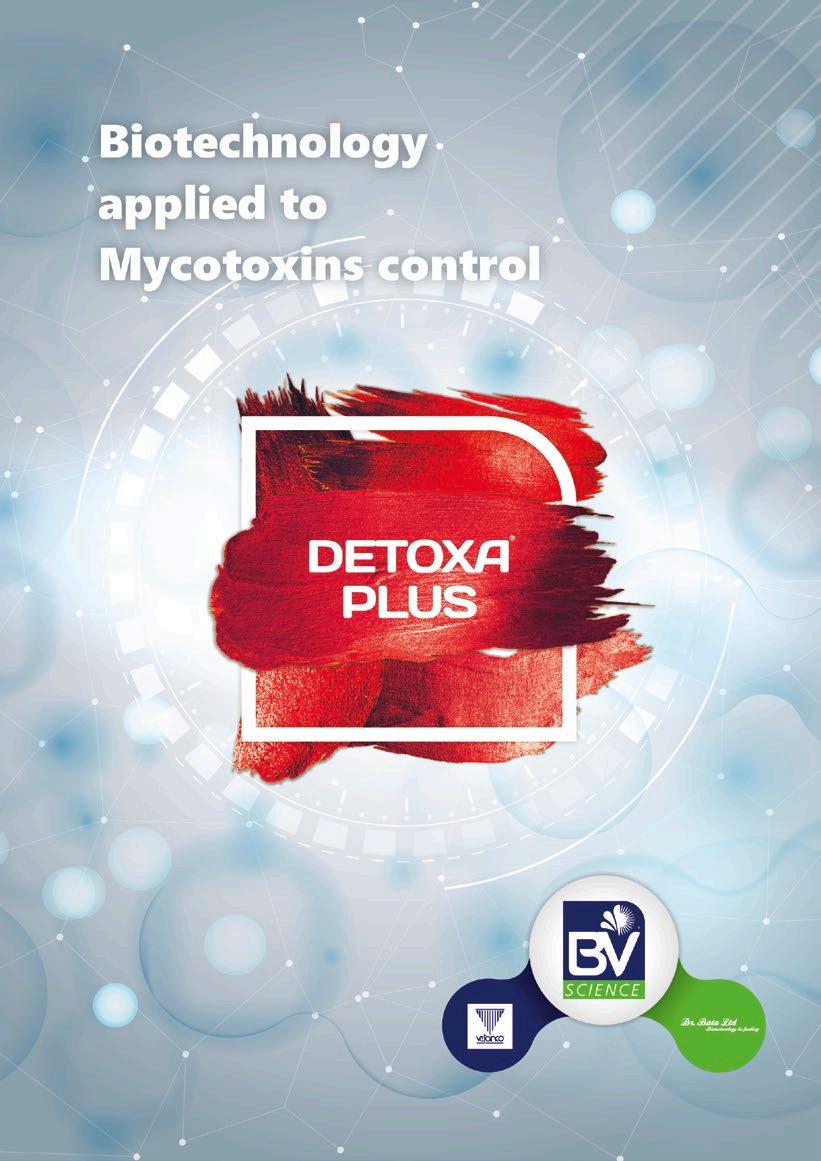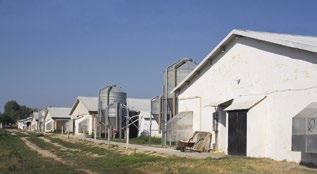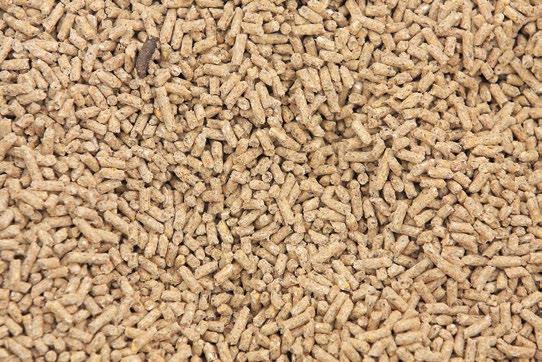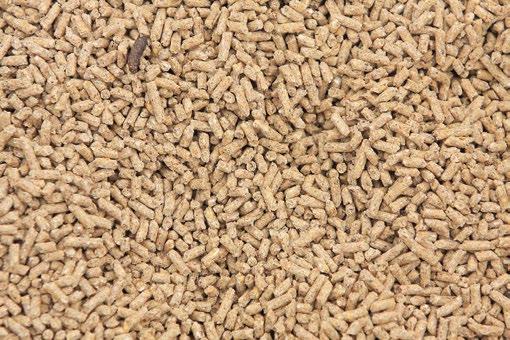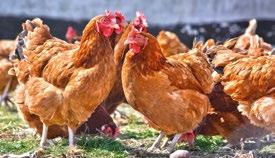






The year 2022 has gone by with real challenges for the global agri-food system in the face of extreme weather events, supply-chain disruptions, international conflicts, food waste and rising environmental impacts. Resulting in uncertainty regarding our capacity to effectively mitigate global hunger and manage food security.
The challenge at hand is of titanic proportions and so are the matters at stake. Making them clear priorities for policymakers worldwide. It is no surprise that topics like food security, climateresilient agriculture, and agri-financing were rigorously discussed at the G20 Summit in Indonesia and at many other important events held throughout the year.
Identifying the problem is key. However, finding different strategies to tackle these challenges is just as important, or even more so.
Under this scenario, agri-food industry trends seem likely to strengthen themselves during 2023, in an attempt to find solutions to these conflicting times.
In a recent report, the United Nations highlighted the need to support developing nations in order for them to withstand the impacts of global warming and be able to assure a stable food supply. Climate adaptation strategies and projects have been underfunded in the past; however, this appears to have changed during 2022 and will most likely continue to do so in 2023. Hence, agri- financing and Investments linked to sustainability projects will continue gaining momentum.
Digitization in agriculture represents a tool through which economic recession in certain regions can be addressed with an aim of optimizing productive processes and the use of resources. Contributing to reducing environmental impacts associated with farming and allowing producers to achieve cost-effective productions. Therefore, both public and private entities will increase investments in agriculture
technology, in an attempt to enhance further development in: remote sensing data, GIS technology and AI models amongst other tools. Boosting food production and improving profitability.
Reducing food waste must become a priority as the world struggles with food insecurity and economic instability. One-third of the food produced globally is either lost or wasted at different stages within productive chains. The implementation of circular economy models, like the use of waste streams for insect feeding and breeding, for their posterior inclusion in animal feed, seems promising. However, in order for this to occur regulations regarding the use of residue streams, and alternative feed sources must be modified and made more flexible under appropriate sanitary levels.
Soil conservation and biodiversity are major topics of discussion. However, there is still a lot to be done to mitigate soil degradation under current productive conditions. Organic farming represents a promising practice that can contribute to soil health, however it is also true that the products derived from such activities are more expensive. As a result, governments need to find ways through which they can support these green practices. The public will also have to rise up to the occasion and be willing to pay more for these products, while policymakers, NGOs, and companies within the agri-food sector, must come together with new initiatives and investments to safeguard food production and soil health.
This will be a challenging year for the agri-food industry. However, we believe that this sector will come out on top as it has done before. Putting all the knowledge, abilities and resilience of its protagonists to good use. nutriNews International will be there side by side offering its support, and delivering cutting edge information to contribute to the sector’s constant improvement.
We hope you enjoy the third issue of our printed magazine, and we look forward to keeping you informed!
EDITOR
COMMUNICATION GROUP AGRINEWS LLC
ADVERTISING
Luis Carrasco +34 605 09 05 13 lc@agrinews.es
Anna Fernández Oller +34 609 14 50 18 af@agrinews.es
CUSTOMER SUPPORT
Mercé Soler
EDITORIAL STAFF
Álvaro José Guzman
TECHNICAL DIRECTION
Dr. Edgar Oviedo (poultry)
David Solà-Oriol (swine)
Free distribution magazine
AIMED AT VETERINARIANS AND TECHNICIANS Depósito Legal Nutrinews B11597-2013
info@grupoagrinews.com nutrinews.com grupoagrinews.com Subscription price 125$
Images: Noun Project / Freepik/Dreamstime
Cristina M. L. Sá-Fortes1 and Mel
1Professor of the Animal Science course at UFMG




2Undergraduate student ofAnimal Science at UFMG



30 04 Nutraceuticals in small animal diets 10 Benefits of Using Black Soldier Fly (Hermetia illucens) Larvae in Livestock Diets 18 Raw Materials: PROCESSED ANIMAL PROTEINS
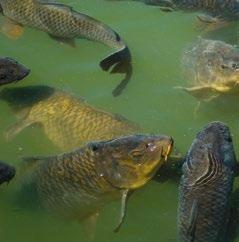
Planning
management:
1
Suzane Santos Marques 2 Alba Cerisuelo IVIA Bree Modica, MS and Liz Koutsos, PhD EnviroFlight, LLC Suresh Neethirajan Farmworx, Wageningen, The Netherlands Lucas Gustavo Rodrigues Pimenta1 and Daniela Chemim de Melo Hoyos 2 Pisciculture Igarape/Post-Graduate Coordinator in Aquaculture- FACVivian I.

Simone G. de Oliveira
1 PhD student in Animal Science - Federal University of Paraná










2 PhD student in Veterinary SciencesFederal University of Paraná

3 Associate Professor, Department of Animal Science - Federal University of Paraná
4 Adjunct Professor, Department of Animal Science - Federal University of Paraná
70 Ruminal metabolism of volatile fatty acids PART 1
1
 G. Talegón1 , L. Aguirre1 , H. Kadardar1 , M. Frikha2, J.C. Abad2 y G.G. Mateos1
Polytechnic University of Madrid 2Cobb Spain, Madrid
Giovanna Martelli Associate Professor of Animal Science Department of Veterinary Medicine. Alma Mater Studiorum University of Bologna (Italy)
Fernando Bacha1 and Carlos Fernández 2 1NACOOP, S.A. 2Universitat Politècnica de València
Vieira¹, Marley C. dos Santos1 , Isabella de C. Dias 2 , Alex Maiorka 3
G. Talegón1 , L. Aguirre1 , H. Kadardar1 , M. Frikha2, J.C. Abad2 y G.G. Mateos1
Polytechnic University of Madrid 2Cobb Spain, Madrid
Giovanna Martelli Associate Professor of Animal Science Department of Veterinary Medicine. Alma Mater Studiorum University of Bologna (Italy)
Fernando Bacha1 and Carlos Fernández 2 1NACOOP, S.A. 2Universitat Politècnica de València
Vieira¹, Marley C. dos Santos1 , Isabella de C. Dias 2 , Alex Maiorka 3
 Cristina M. L. Sá-Fortes1 and Mel Suzane Santos Marques2 1Professor of the Animal Science course at UFMG 2Undergraduate student ofAnimal Science at UFMG
Cristina M. L. Sá-Fortes1 and Mel Suzane Santos Marques2 1Professor of the Animal Science course at UFMG 2Undergraduate student ofAnimal Science at UFMG
Proper nourishment of dogs and cats is the basis for a healthy and long-lasting life. To meet this premise, nutritionists develop diets based on data regarding nutritional requirements for amino acids, fatty acids, minerals and vitamins. Associated with the energy needs of different physiological phases. While also consulting recommendations found in different databases and nutritional guidelines for dogs and cats, such as: FEDIAF, NRC or AAFCO.
Nutrient requirements and their availability in different ingredients is related to the digestibility of raw materials, which can be influenced by:



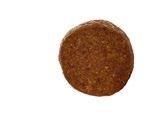
Antinutritional factors;
Levels and types of fibers;
Quality of diet processing
Intestinal health and other factors.
Knowledge and application of this nutritional basis is essential. However, with genetic mapping it is possible to have access to new information related to the interaction which occurs between ingredient compounds and genes. This new discipline is known as nutritional genomics which evaluates the effects of nutrients and bioactive components of the diet on gene expression.
Nutrigenetics, evaluates genetic variation of individuals and the effects that these changes have on the individual’s response towards the diet.


Understanding the gene/ nutrient interaction is important for nutritional support in dogs and cats. Considering the fact that nutrients as well as bioactive and phytochemical compounds can modify the animal’s phenotype through gene expression modulation.
Understanding these interactions directly in the gene or through epigenetic relationships allows to select those nutritional components that are the most beneficial for the animal’s health Transforming the development of diets, focusing on the balance of the individual as a whole,and reducing the risk of disease.
Certain diseases will benefit more from nutrigenomic studies. Some examples are: chronic degenerative diseases related to oxidative stress, chronic inflammation, imbalances in the endocannabinoid and metabolic systems.

The living standards for dogs and cats in today’s society are completely different from what they were a few decades back. Many have little or no physical activity during long periods of time and are sometimes confined to very small spaces. Some individuals suffer from separation anxiety while many of their tutors have a hard time understanding that the behavioral and nutritional needs of dogs and cats are different from those of humans. This in many cases leads them to establish stressful environments for their pets to live in.
Functional foods must present bioactive or phytochemical compounds, as well as beneficial properties, besides their basic nutritional characteristics. Nutraceuticals are isolated bioactive compounds, which are found in concentrated forms, superior to those present in foods.
Both can be beneficial for organic functions within the body of dogs and cats. Reducing the risk of disease, and in the case of nutraceuticals, these can be used as supplements for certain treatments.

Changing diets based on individual profiles is promising, but a change in the lifestyle of these animals is also necessary. Considering that the environment as a whole can modulate gene expression.
The feed component contributes largely to modulating animal health. This has been verified as the life expectancy of dogs and cats has doubled in recent years and the use of dietary components such as functional and nutraceutical foods has shown to contribute to healthy aging.
Japan was responsible for introducing the concept of functional foods during the 1980s. In 1990, foods known as Foods for Specified Health Use (FOSHU) were created, aiming to promote health within the population (Anjo, 2004).

Free radicals are produced as part of the body’s normal functioning through various metabolic reactions and in response to chemical or biological stressors
Antioxidant supplementation can be performed with:
Vitamins E and C;
Reactive oxygen species in free radicals are highly unstable due to the unique shape of their electrons, which need to donate or capture new ones in order to reach an equilibrium. This process leads to protein, DNA and cell damage.

These harmful effects must be neutralized in order to prevent destruction or loss of cellular function and tissues. However, due to the high frequency with which these occur, existing oxidizing systems may not be enough to avoid the onset of oxidative stress. Resulting in premature aging (Eirmann, 2017).
Carotenoids such as lycopene, astaxanthin and beta-carotene (Beynen, 2019);
Microminerals: selenium, zinc and manganese, which participate in the formation of antioxidant enzymes such as superoxide dismutase, catalase and glutahtione peroxidase; Flavonoids which are phenolic compounds such as quercetin, caffeic acid, lalic adic, elagic acid and curcumin, wich sequester free radicals and prevent liquid peroxidation.
The use of antioxidant nutraceuticals can help combat free radicals, and reduce their deleterious effects on the body of dogs and cats.

These are found in cold water marine fish and are considered to be essential nutrients (NRC, 2006). Through alphalinolenic fatty acids and the actions of the enzymes desaturase and elongase, they synthesize eicosapentaenoic acids (EPA) and docosahexaenoic acids (DHA).
However, this action is limited in dogs while in cats it simply does not occur. Therefore, these molecules must be supplemented in order to maintain physiological activities like: cell signaling, fluidity and cell membrane integrity (Calder, 2008).

They are used in order to assist in the modulation of the intestinal microbiota, improving the profile of desirable microorganisms and controlling those with pathogenic potential.
Probiotics are living microorganisms that contribute to the reestablishment and maintenance of microbiota eubiosis when used as supplements. Prebiotics are mostly non-digestible oligosaccharides. Yet, these are fermentable by desirable microorganisms, which contributes to improving and balancing their populations, while reducing pathogenic bacteria. The presence of short-chain fatty acids is necessary for the maintenance of intestinal cells and serves as a substrate for the growth of healthy microbiota.
The omega 3 family have several important actions, amongst which some examples are:

Modulation of inflammatory processes through the synthesis of anti-inflammatory cytokines (Calder, 2012);
Cardioprotective, neurological and allergic processes;
Cancer prevention;
Improvement of renal function;
Skin and coat health preservation.
The main prebiotics which are used as supplements in small animal diets are: fructooligosaccharides, mannan-oligosaccharides, β-glucans and inulin.
The dog and cat microbiota is specific to each individual. It is known that phylums in dogs have higher percentages of Firmicutes, followed by Proteobacteria, Fusobacteria, Bacteroidetes, and Actinobacteria, respectively. However, factors such as lifestyle, diet, genetics and physiological state can affect the composition of microbial populations.
The importance of a balanced microbiota, is associated with good health, as it contributes to preserving intestinal integrity. The latter is key when strengthening the immune system. (Zapatera et. al., 2015).
β-glucans stand out regarding their applicability for immune modulation through the stimulation of cellular and humoral immunity. These compounds contribute to reducing inflammatory responses, and possess antibacterial, antitumor and antiviral activities (Vannucci & Vetvicka, 2019).

The use of nutraceuticals in dogs and cats has become a growing trend. Studies have revealed health benefits when these compounds are associated with wellformulated diets, as well as proving that they can be used as supplements for disease treatment and prevention.

However, there is still little speciesspecific information available. Further clarification regarding dosage and efficacy levels is also necessary.
Nutraceuticals in small animal diets
DOWNLOAD ON PDF
 Bree
Bree
Modica,
MS; Liz Koutsos, PhDEnviroFlight, LLC 2100 Production Drive, Apex, NC 27539
The black soldier fly (Hermetia illucens, BSF) has received significant attention in the past decade or more due to the capacity of the larvae to upcycle low-value feed inputs and divert those inputs from landfills or other less sustainable options.
Additionally, BSF is found on all continents except Antarctica and is thus not considered an invasive species.
They present little risk of zoonotic disease and can actually reduce the presence of harmful bacteria and houseflies in various substrates.
This insect is highly environmentally sustainable, requiring mere fractions of the inputs (feed, land, water, energy) used to produce traditional animalbased ingredients and emitting far fewer greenhouse gases.
The finished products of BSF larvae (BSFL) rearing include:

partially defatted, protein-rich BSFL meal
whole dried BSFL BSFL oil
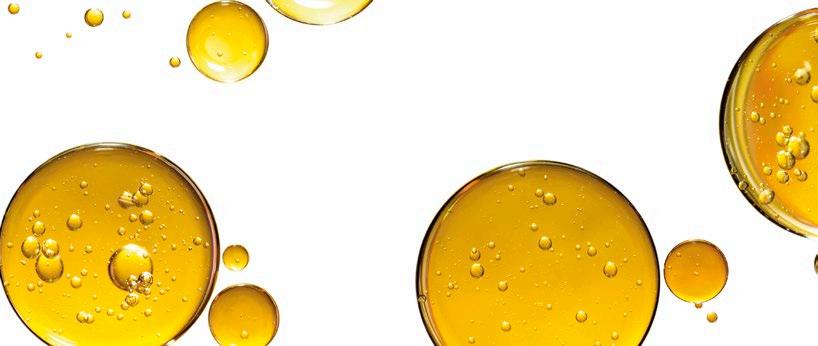
BSFL-based ingredients are becoming widely accepted and utilized in both livestock feeds and pet foods. The nutrient composition of BSFL ingredients is shown in Table 1

Table 1. Nutrient composition and AA digestibility (in parentheses) of three BSFL ingredients.
*EnviroFlight, LLC internal data; ^Total fatty acids, calculated
The Association of American Feed Control Officials (AAFCO) has defined whole-dried BSFL, ground-defatted BSFL, and BFSL oil for use in multiple species, including poultry, swine, and salmonids (Table 2). In the United States, BSFL themselves must be fed AAFCO-defined or GRAS ingredients. Therefore, the use of pre-consumer byproducts is much more common than the use of post-consumer by-products, which may require more attention to risk mitigation.
BSFL ingredients can be used in swine, poultry, aquaculture, and companion animal diets as an effective alternative to traditional protein and lipid ingredients. Little research has examined the use of these ingredients in cattle or other ruminants, although work in this area is currently underway.
In broilers, BSFL meal, up to 20% of the diet, and BSFL oil, up to 100% of the dietary added fat, maintained growth performance and carcass characteristics similar to control birds fed commercial diets. In layers, performance and egg quality were maintained or improved with BSFL meal, BSFL oil, or whole-dried BSFL inclusion in the diet. Taste and consumer acceptance were improved with 5% BSFL meal inclusion, and egg yolk pigmentation was enhanced by adding 16% BSFL meal or 4.5% BSFL oil (replacing soybean meal and oil sources).

In nursery pigs fed 5-19% BSFL meal, growth performance and feed efficiency were similar to soybean meal controls. Additionally, feed intake was improved with BSFL meal inclusion, presenting the opportunity to enhance intake in this critical post-weaning period.
Similar results have been demonstrated in growing pigs, and standard ileal amino acid digestibility was similar for diets containing BSFL meal (full fat or partially defatted) as compared to animal proteins and soybean meal diets. In finishing pigs, less research has been conducted, but 4% BSFL meal improved ADG and feed efficiency compared to soybean meal and oil-fed counterparts. Additionally, there was no impact on carcass characteristics.
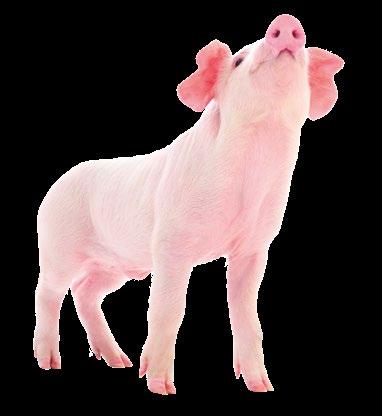
In aquaculture species, BSFL ingredients have also shown efficacy. Pacific white shrimp (Litopenaeus vannamei) fed BSFL meal up to 28% of the diet (replacing menhaden fishmeal) had improved growth rates. Similarly, Atlantic salmon (Salmo salar) and Rainbow trout (Oncorhynchus mykiss) fed diets with total fishmeal replacement by BSFL had similar or improved growth performance, with no negative impact on fillet sensory qualities.





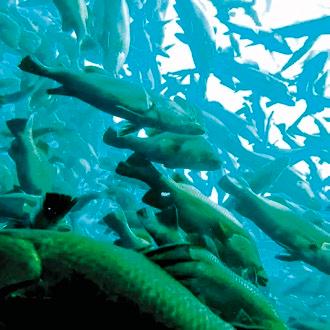
It is clear that BSFL ingredients can be formulated into animal feeds as an alternative to traditional protein and lipid sources, with no negative impact and often a positive impact on performance and feed efficiency.



In addition to nutritional benefits, BSFLderived ingredients can offer additional value in animal feed programs due to the presence of anti-microbial peptides, chitin, and lauric acid.
Antimicrobial peptides (AMPs) form the basis for the insect’s own immune system and affords BSFL with a mechanism to reduce their exposure and risk of pathogens, including viruses, bacteria, and fungi. AMPs are tiny molecules, which makes them resistant to degradation by heat.
Therefore, activity is expected to be maintained during the processing of these ingredients and after their inclusion in animal feeds. Interestingly, the feedstock and husbandry of BSFL can impact the type and quantity of AMPs expressed. Hence, there is likely variability in the activity of BSFL ingredients depending on their source.
Antimicrobial peptide


Chitin is a component of the insect exoskeleton and may act as a prebiotic and beneficially modulate the gut microbiome. Additionally, chitin may directly or indirectly prime the immune system and improve resistance or resilience to immune challenges.
Lauric acid is a 12-carbon medium-chain fatty acid (MCFA) commonly sourced from coconut and palm oils. It is also a significant component of BSFL oil and has a wide array of antimicrobial potential.
As with AMPs, lauric acid levels can vary based on the feedstock used during BSFL rearing. Lauric acid may also provide a more readily available energy source than other common fat sources.
The short chain length reduces the need for lipolysis before being absorbed by intestinal cells. This trait makes lauric acid an excellent energy source, particularly for young animals whose gut function is not yet mature and for animals with aged or compromised gut function.
In newly weaned pigs, BSFL oil improved growth as compared to piglets fed poultry fat. BSFL oil decreased gut inflammation in rainbow trout compared to soybean oil-fed trout. Similarly, BSFL oil decreased the levels of harmful bacteria and associated inflammatory markers in turkeys as compared to poults fed soybean oil.
The protein-rich BSFL meal, in addition to whole dried BSFL, will contain all three of these components and may provide the opportunity to optimize the health of production and companion animals.
In broiler chicks, 1-3% whole dried BSFL was associated with increased survival rates in response to a fowl typhoid challenge.
Similarly, Beagles supplemented with 1-2% BSFL meal had increased antiinflammatory and antioxidant capacity compared to dogs fed no BSFL meal.
There are several producers of BSFL in the United States. EnviroFlight (a brand of Darling Ingredients, NYSE:DAR) opened its doors in 2009 and, in 2018, opened the first commercial-scale U.S. BSFL production facility. Situated in Maysville, KY, EnviroFlight operates over 200,000 ft2 of breeding, growing, and processing operations and currently supplies:
whole dried BSFL (EnviroBug),
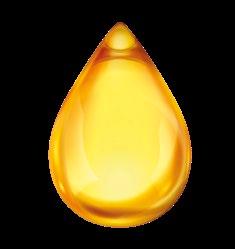

BSFL meal (EnviroMeal), and
BSFL oil (EnviroOil) to the U.S. and Canadian markets.
In 2022, EnviroFlight opened a new Innovation Center in Apex, NC (Fig. 3) This facility serves as the R&D hub for researchers focused on BSFL genetics, immunology, nutrition, reproductive physiology, and food science.

The North American Coalition for Insect Agriculture (NACIA) is the trade organization representing:
insect producers
manufacturers of food, animal feed, and pet foods that contain insects researchers from both industry and academia
manufacturers of products for soil health, and plant nutrition
NACIA is currently working to improve the regulatory environment in North America, connect members with industry stakeholders, and inform key stakeholders about the potential for insects to provide environmentally sustainable, highly nutritious ingredients that can be produced as a part of circular and regenerative agriculture.
For more information, visit www.NACIA.org
For further reading on the above discussions, please reference the following published papers:
AMP, chitin, and lauric acid
Koutsos, E., Freel, T., & Modica, B. (2022). Immunomodulatory potential of black soldier fly larvae: Applications beyond nutrition in animal feeding programs. Translational Animal Science, 6.
Swine data
van Heugten, E., Martinez, G., McComb, A., & Koutsos, L. (2022). Improvements in performance of nursery pigs provided with supplemental oil derived from black soldier fly (Hermetia illucens) larvae. Animals, 12, 3251.
Aquaculture data
Fawole, F. J., Labh, S. N., Hossain, S., Overturf, K., Small, B. C., Welker, T. L., Hardy, R. W., & Kumar, V. (2021). Insect (black soldier fly larvae) oil as a potential substitute for fish or soy oil in the fish meal-based diet of juvenile rainbow trout (Oncorhynchus mykiss). Animal Nutrition, 7, 1360-1370.
Modica, B. (2022). Insects in aquaculture feed: Nutrition and beyond. AquaFeed, 14(1).
Sustainability data and EnviroFlight, LLC: www.enviroflight.net
Benefits of Using Black Soldier Fly (Hermetia illucens) Larvae in Livestock Diets
DOWNLOAD ON PDF

Processed animal proteins (PAPs) are ingredients derived exclusively from category 3 animal byproducts (ABP’s)
ABP’s Category 3
Low-risk material derived from healthy animals, declared as suitable for human consumption.
PAPs include any healthy animal part which is not used to produce food for human consumption.

The use of animal protein in feed from non-ruminant animals was reauthorized on August 17, 2021, with the publication of a Regulation that relaxed the ban on proteins from animal origin in feed (Regulation (EU) 2021/1372) after 20 years of prohibition (Regulation (EU) 999/2001).
In aquaculture, this reauthorization has been in force since 2013.
The use of this type of ingredients is still prohibited in ruminants.
In this sense, the Regulation adopted on August 17 authorizes the use of PAPs derived from pigs only in poultry feed and the use of PAPs derived from poultry in pig feed
PAPs are ingredients with a high protein content (45-70%) of high biological value, which can be superior to other protein sources such as:
The new regulation establishes strict conditions under which these ingredients can be used in pig and poultry feed. Aiming to:

Ensure compliance with the ban on intraspecific recycling (i.e. avoid cannibalism)
Avoid cross-contamination and favor traceability
Facilitate official controls on feed
And legumes
In addition, they are a source of local protein, produced in Europe, which confers them added value in terms of sustainability and sovereignty
The “Catalogue of Raw Materials” (Regulation (EU) 68/2013) classifies processed animal protein in section 9. “Products from terrestrial animals and their derived products” (Table 1).
 Soybean meal
Rapeseed meal
Soybean meal
Rapeseed meal
9.4.1
Transformed animal protein.
Product obtained by heating, drying and milling of terrestrial animals. Including whole carcasses orparts of them, at any stage of their life. This includes invertebrates, except for those species that arepathogenic to humans or the animals, from which the fat may have been partially extractedor eliminated by physical means. If such products are extracted through the use of solvents, these may contain up to 0,1 % hexane.


It is mandatory to declare protein, fat and ash contents.
Slaughterhouses

Crude protein, crude fat, crude ash, moisture (when it is > 8%).
These ingredients must be treated in accordance with Section 1 Chapter II, Annex X of Regulation (EU) No 142/2011 during their procurement process.
As a general concept, these products must be subjected to processes combining temperature and pressure for set periods of time, in order to achieve an adequate sanitation.
By definition, it is expected that new PAPs present high variability due to their origin. Considering that they may contain any part of the animal.
There is still very little information regarding this variability and its possible classification and composition.
Several studies conducted with broilers at Wageningen University (Krimpen et al., 2018) suggest that the composition of new PAPs is similar to that of meat meal
However, new PAPs present:
Lower energy digestibility (812% less)
Crude fat (4-25% less)
Protein (8-19% less)
Amino acids and phosphorus (9-19% less)

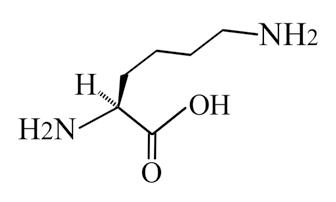
Compared to the values found in the CVN tables (2018). Therefore, it is advisable to update these values in the ingredient composition tables for animal feed.
In general, these are ingredients with high amounts of protein, fat and ash.
Their major essential amino acids are lysine, leucine and valine.
As for their fat profile, oleic acid holds a big proportion.
These ingredients are also rich in essential elements such as:
At the nutritional level, PAPs are an ingredient of excellent quality (FEFAC, 2019):
Maintaining the levels of these elements in accordance with European regulations (Pederiva et al., 2022).
In regards to protein quality, and amino acid profiles; some studies suggest that depending on the processing method which is employed, heat treatments may favor the rendering of amino acids. This is especially true for aspartic acid. Heat may also reduce the protein digestibility


High content of digestible nutrients (such as amino acids and phosphorus),

Contain a high vitamin content
No known antinutritional factors, which makes them suitable alternative for their inclusion in young and adult animals (FEFAC, 2019)
According to an in vitro study carried out by Bellagamba et al. (2015), the maximum reduction in protein digestibility (from 86%to 76%) occurs at 115ºC for 180 minutes, nonetheless, after just 20 minutes of this same treatment, lower protein digestibility was already observed (ranging from 86% to 78.3%).
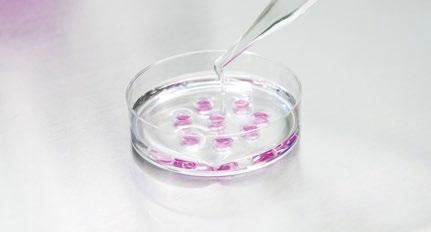 Iron Zinc Copper Manganese Chromium Nickel Cobalt
Iron Zinc Copper Manganese Chromium Nickel Cobalt
FEFAC (2019) suggests that the poultry feed industry could be one of the main consumers of this type of raw materials within a near future. Once current barriers regarding: logistics, organization of facilities (slaughterhouses, feed mills,…), price and public opinion have been overcome.
The inclusion levels of new PAPs in feed are still unknown. However, it is expected that these will be used at a 5% minimum inclusion level, similar to conventional meat meals.
In order for this to occur, logistical barriers involved in the authorization and regulation of their production, processing and handling in factories must be overcome.

Despite representing local alternative sources of protein, with good nutritional quality, PAPs still require greater production volumes at lower costs in order to become widely adopted.
Raw Materials: Processed Animal Proteins
DOWNLOAD ON PDF
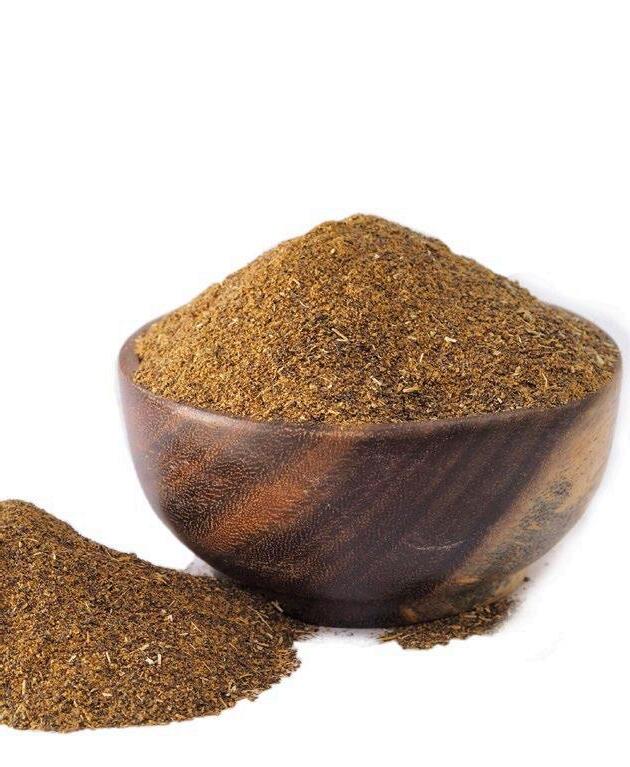


Real-time monitoring of animal’s optimal nutrient utilization can be problematic and time consuming in commercial operations. Recent developments in sensor technology, and Artificial Intelligence (A.I.), have made production more streamlined and efficient.
Digitization has allowed livestock producers to optimize their operations to create better systems, less environmental impact, lower production costs, and produce a better finished product.
Remote sensors have been developed to monitor nutritional utilization by livestock, in real time, under most conditions. Artificial Intelligence software is available for real-time monitoring of all measurable information, 24.7, keeping records and making decisions based on that information, all autonomously.
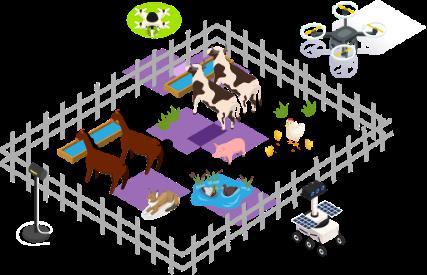
Employing sensor technology and Artificial Intelligence can result in significant improvements regarding efficiency, sustainability, and quality.
Nutritional utilization is a valuable factor to consider, as it relates directly to the environmental impact of livestock production, utilization of resources, and overall production efficiency.
Nutritional Utilization represents the ratio of nutritional supply vs. nutritional requirements under varying circumstances and desired results.
Nutritional supply is the amount of feed, and the nutritional composition of the feed itself.

Nutritional requirements for any specific animal, or group of animals, depend on their basic biological maintenance needs, as well as their zootechnical performance, genetic factors, and how the current environment affects them (heat, cold, damp, humidity, crowding, immunological challenges, etc.). There are five basic factors to consider when determining nutritional requirements.
These are: Maintenance, Growth, Reproduction, Lactation or Egg-Laying. These are variable and constantly changing.

Determining nutritional utilization can allow producers to implement feeding strategies to obtain maximum performance and efficiency under varying conditions.
The determination of nutritional requirements can be problematic for many reasons. An individual animal’s requirements can differ widely due to: gender, health, environment, age, genetics, etc.
To be efficient, in theory, nutritional requirements need to be met for each individual animal, according to their specific needs.
This is difficult to achieve using traditional feeding models. Feed selection involves several considerations, including total nutritional value, as well as other factors such as digestibility, palatability, and more.
Inconsistency in animal feed can be a significant problem. Feed producers often change their feed formulas without previous notice, which could mean that the feed you bought last week is not the same as this week.
Sometimes these changes may be beneficial for your animals, but other times they are just just better for the feed producer. Hence, the determination of nutritional utilization efficiency is important in order to be able to adjust to changing conditions.

The use of sensors, Infrared Imaging, vocalization platforms (sound sensors), wearable and swallowable transponders, AI, and other digital technologies, are recent developments in livestock production. Such tools allow more precise analyses of internal conditions that can indicate improper nutrition, health problems, stress levels and more. This is the future of animal farming.


sensors are usually in the form of ear tags, or collars. Subcutaneous sensors can be injected or surgically inserted under the skin of the animal and they are only used for research purposes.
These types of sensors are not available for commercial use.
Nutritional utilization efficiency is monitored through the use of sensors in silos, automated feeding systems, and surrounding locations. This allows the monitoring of temperature, rumination, feeding duration, and other relevant data, for herds, flocks or individual animals.
Artificial Intelligence-based applications make decisions regarding the adjustment of feed amounts and composition based on the information provided by sensors. This is all done in real time, and autonomously, with occasional human monitoring.
a 6% reduction of disease and a 24% drop in the number of culled animals due to health reasons, compared to the control group.
A basic automated feed system usually consists of a ‘hopper’ which is controlled by software and connected via the Cloud to a system that monitors, dispenses, and adjusts feed. It can be used for entire herds, or individual animals.
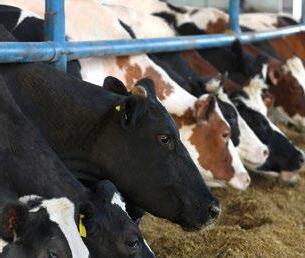
This, along with other information from wearable sensors, cameras, thermometers, and other sources, is sent to an Artificial Intelligence-based program that can automatically manage, adjust, and dispense feed, in addition to keeping records and sensing patterns.
It can alert if an animal is not eating enough, or if its eating habits have changed. The entire system can be managed by the farmer or rancher from a smart phone in the field, or at home on a computer, laptop, or even an iPad or Chromebook.

In a study carried out in 2021, pigs were fed swallowable capsules with transponders in them. These, measured things like pH, temperature, transit times, and other internal values in order to calculate various parameters, such as nutrient utilization. The 4 pigs were tested under fasting condition as well as under fed conditions. Gastric pH, and stomach pressures were also recorded and analyzed.

It was found that gastrointestinal pressures varied from 2.3 to 4.0h. Gastric emptying pressures were also variable, from 20 to 233 h.
The average time for gastric emptying ranged from 2.2 to 4.0 hours. This kind of information is valuable when assessing how the animal is using its feed.
Our research group at FarmworxWageningen, conducted multiple experiments to evaluate physiological stress in pigs using multimodal sensor technologies. This was done through the use of heart rate and respiration rate wearable sensors along with video cameras and thermographic imaging.
Allowing us to collect a huge volume of multimodal data from pigs before and after feeding associated with specific nutrients.
The obtained results (Figure 1) from our Artificial Intelligence based mathematical model indicate that measuring heart rate along with body surface temperature can offer valuable insight for the monitoring of nutrient utilization in pigs.
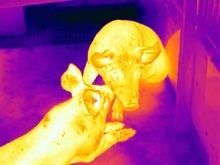
Figure
by Farmworx, Wageningen (https://www.youtube.com/ watch?v=jkyKYjIj1iQ). The role of feed processing and nutrient utilization is a function of hydrothermal regimens and radiant heat loss in pigs as measured by the infrared thermography, heart rate and respiration rate. Gestating swine nutrient recommendations are possible based on real-time heart rate data. Blue color tape on the body of the pig is the wearable belt type dual heart and respiration rate sensor platform.
Digitalization, Sensor Technology, and Artificial Intelligence can allow producers to determine when their animals have less-than-ideal nutritional utilization in order to proceed accordingly.

Automatic feeders can be connected via the Cloud to an automated system that can customize and adjust feed and supplements for each animal.
 1. Precision Pig Feeding - Thermal images of pigs collected from multiple experiments conducted
1. Precision Pig Feeding - Thermal images of pigs collected from multiple experiments conducted
Artificial Intelligence can be updated continuously with real-time information and is able to discern patterns and make decisions based on this. It can even make suggestions and feed information to decision support systems for on-farm daily management protocols.



Poultry temperatures can be measured using infrared imaging sensors (Figure 2). A chicken’s temperature can be an indicator of nutritional utilization.
In a recent study (https://www.biorxiv.org/ content/10.1101/2022.07.31.502171v1.full) carried out by our group at Farmworx, Wageningen, 40 laying hens were subjected to stress every other day and monitored using infrared imaging.
Measuring the temperature of various parts of the chickens’ bodies in vivo.
Audio recordings were also collected to measure poultry vocalizations and determine its relationship with stress. Twelve more chickens were used as a control group and were not subjected to stress. Stress can adversely affect the chicken’s nutritional utilization.
Thermographics were used to obtain images before stress was introduced, immediately after, and one hour after causing stress. Audio recordings were taken at the same time.
The obtained results were interesting. A correlation between body temperature and stress levels was found, with certain variability regarding the amount of time elapsed in relation to stress induction and the recorded vocalizations. Immediately after stress was induced, the birds showed a significant decline in body temperatures compared to the test group.
This was most apparent in the beak and comb areas of the birds. No relevant change was observed in pre-stress and post-stress conditions.
Figure 2. Thermal videos & images of laying hen chicks collected from multiple experiments conducted by Farmworx Wageningen. Changes in the surface temperature of the chicks is an indication of stress, dynamics of energy content and thereby a way of assessing nutrient utilization.
Vocalizations were also found to decrease during stress. Prestress and Post stress showed no significant changes in vocalizations. Pre-stressed birds averaged 39.7 calls per minute. During stress, their calls decreased to an average of 12.1 vocalizations per minute. Age, ambient air temperature, temperatures in different body areas of the chickens, and vaccination status were considered as influential factors.
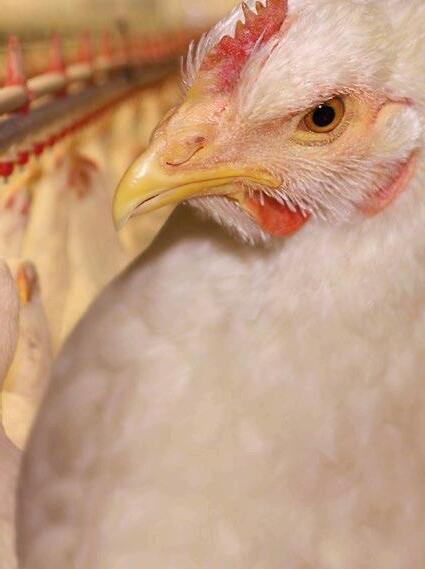
The demand for livestock products is increasing, and will continue to do along with population growth. This will create increased competition for resources, grazing land, water, etc. Livestock farming will be put under even greater pressure due to sustainability concerns and the need to function in a carbon-restrictive environment. ‘Green’ legislation and changing social attitudes will create further challenges for this sector.
Under this scenario, digitalization, sensor technology and Artificial Intelligencebased management will become more common in the near future.
Innovations and developments aimed at monitoring nutritional utilization in order to conserve resources, improve sustainability, and improve efficiency will continue to enhance the way poultry, cows, goats, sheep, pigs, and other food animals are produced. Digital sensors A.I. Management software, and automated feeding systems from companies like Hanen, Maximus, and Trioliet will allow individual animals to be fed according to their unique biorhythms, genetics, health conditions, and sustainability concerns
This will create new jobs for: livestock workers, sensors and software manufacturers, as well as in other related fields. Therefore, digital (precision) livestock farming (https:// www.sciencedirect.com/science/ article/pii/S2214180421000131) technology will continue to improve, making livestock production more efficient. Monitoring Nutritional Utilization in the Digital Age DOWNLOAD ON PDF
Brazil has great potential for aquaculture development. The availability of water resources, an extremely favorable climate and a growing demand for fish within the domestic market are all factors which have contributed to boosting this activity.
Just like any other other zootechnical and productive activity, adequate planning is fundamental for good productive yields in fish farming. Contributing to the obtainment of good profits; a main objective behind any productive activity.

Considering that approximately 60 to 80% of the total costs in aquaculture are linked to feed costs, nutritional efficiency in commercial production begins during planning. In addition, nutrition and feed management (feed rate and feed frequency) in fish are directly associated with:
Growth;
Feed conversion rate;
Water quality;
Health status;
Resistance to disease and manipulation;
Meat quality and carcass yield.
In the case of breeders, nutrition and feeding impact both the quantity of produced eggs and the quality of larvae. Thus, good feed and nutritional management are fundamental for successful commercial rearing and for profitable fish farming.

In order to obtain good nutritional efficiency, certain factors need to be taken into account. Including: the target species, its development phase, the type of production system, and the quality of feed.
The fish species which are used in aquaculture have different nutritional requirements as well as changing feeding habits (carnivorous, herbivorous or omnivorous). Knowledge regarding different characteristics such as: behavior in captivity (i.e. if they are a species that tends to live in the bottom of a body of water); positioning of the mouth and constitution of the branchial apparatus (more open or closed gill arches indicate that certain species have filtration capacities), is very valuable when establishing nutritional plans. Preventing feed waste and reducing production costs.

During the development phase, fish in their early stages – fingerlings and juveniles – have high metabolic and growth rates. Therefore, they require feed with higher protein and energy content, as well as higher feed rates, compared to those required by fish in the final fattening phase.
The adoption of adequate feed management practices in cultivated species as well as their adjustment to the type of production system, will contribute to the reduction of negative impacts. Including problems with size uniformity in the fish lot as well as poor feed conversion rates.
Typically, the number of times fish should be fed is higher in the early stages of life. During larviculture it is common for feed to be supplied five to eight times a day.During the fry phase, this frequency drops to two or three times a day, while during the fattening stage it may drop to once or twice a day. Carnivorous fish usually only feed again after digesting their previous meal. Therefore, a feed supply of twice a day is enough. On the other hand, Tilapia tend to accept three meals per day.
Besides generating waste and impairing water quality, excess feeding can increase the amount of fish fat, which negatively impacts its taste. Therefore, overfeeding is detrimental for various reasons.
Fish production in Brazil is mainly carried out in semi-intensive and intensive systems. In semi-intensive systems, primary feeding of plankton (phyto and zooplankton) is usually incorporated as supplementary feeding. This allows producers to reduce feed expenses. Filter fish, such as tilapia and carp, for example, are species that can make good use of this alternative type of primary feeding. In intensive production systems, fish feeding is done exclusively through commercial feed.


The most complete portfolio of highly sustainable organic minerals for optimization of feed conversion and animal weight gain.
Maximum chelation index
Low residue generation
Bioavailability
Utilization of 100% of the nutrients
Biotechnology from Brazil to the world, with innovative and sustainable solutions for animal nutrition and welfare.
Learn about our solutions!
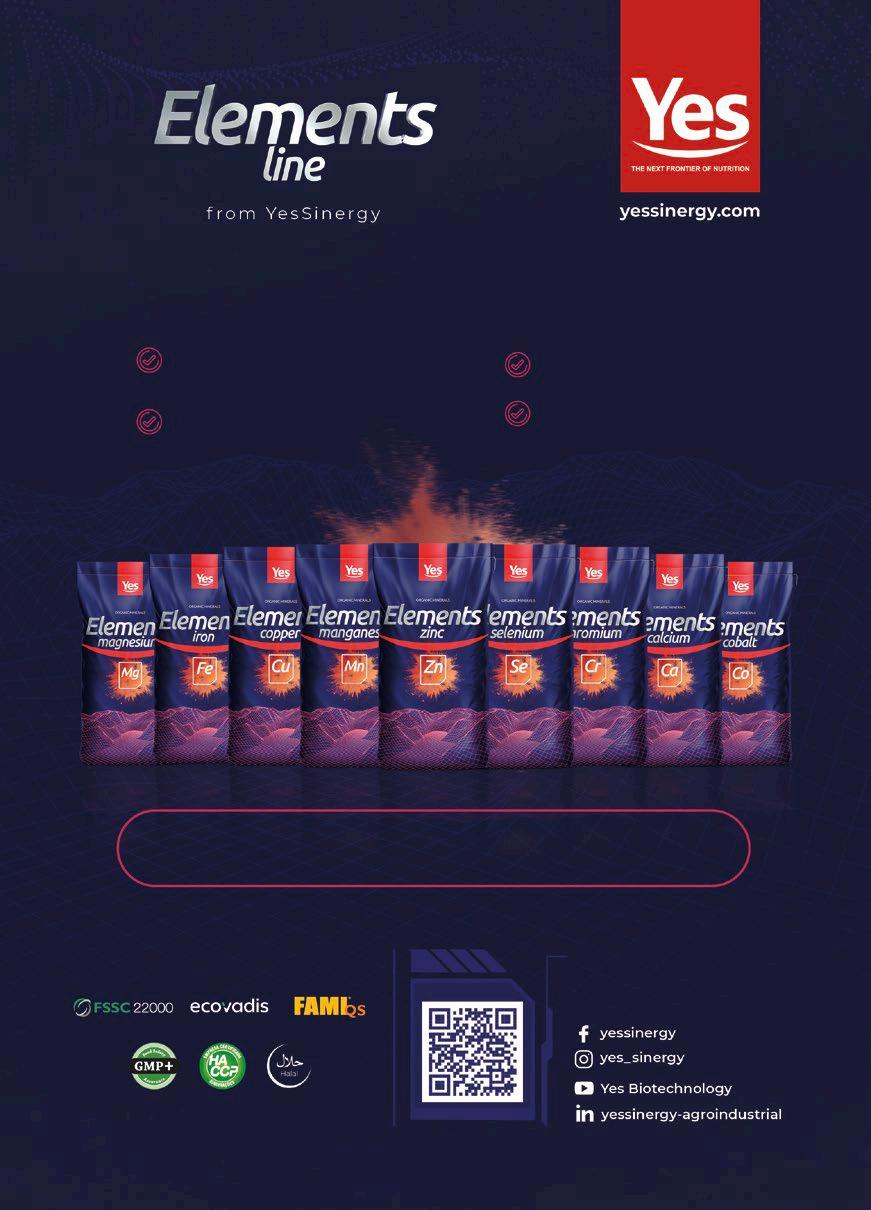
A careful observation of water quality and climatic conditions can contribute to optimizing feed utilization by fish. Low concentrations of dissolved oxygen and high concentrations of ammonia in the water cause appetite reductions in fish and decrease their feed utilization capacity.
When it comes to climate conditions the following fact must be taken into account. Most fish are poikilothermic, which means that they are unable to regulate their own body temperature. Therefore, when the water cools down, their metabolism slows down and when the water temperature is too high, is too high, animals suffer from heat stress. Hence, both scenarios result in lower feed intake.
Thus, whenever the water temperature is too low or too high, a reduction or temporary suspension of feed supply is recommended in order to avoid waste.
The use of good quality diets is always important to obtain nutritional efficiency and obtaining the best performance from fish. Using the least amount of adequate feed which allows to maintain profits, while preserving water quality and animal welfare.
High digestibility
Water stability and fluctuation
Adequate nutrient levels according to the cultivated species
Good palatability
Adequate Phosphorus and Nitrogen content
The use of low quality rations directly impairs water quality, causing stress on the fish and reducing their resistance to pathogens and disease.
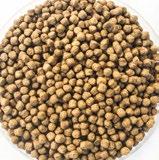
It is a big mistake to think that the use of cheap feed will necessarily reduce production costs and increase profits. Considering the fact that when using poor quality feed, the producer will most likely have to use larger quantities than what he would use if he chose a product with better quality. Sometimes, even a greater feed supply does not guarantee good performance nor adequate health levels in fish fed with poor quality rations.
A correct storage of the ration is extremely important for the conservation of its nutritional characteristics. As excessive humidity, direct sunlight and contamination by microorganisms and/or insects commonly lead to considerable quality losses in the ingredients. The storage time must also be looked after, and it should not exceed 90 days.

Good planning at the time of buying the ration is always a good strategy, because the higher the purchase, the greater the chances of obtaining a better price. For this, it is necessary to check if there is enough space to store the feed as well as making sure that it will not be stored for prolonged periods of time.
Feed supply is another simple yet important management practice in fish production. Preferably, feed should be spread throughout the nursery, and it must not be concentrated in only one or two places. By spreading the feed, the fish farmer increases the chances for all fish to have access to it. This keeps the dominant and larger individuals from gaining greater access to the supplied feed. As it tends to occur when feed is only placed in a few spots within the tank.
The main critical points in fish nutrition include: knowledge about nutritional requirements, feed composition and feed intake. Thus, the use of adequate feed, both in quantity and quality, is fundamental for the success of fish farming.


An example of such success, is what occurred in a fish farm in the State of Espírito Santo, where a 40% reduction in feed conversion was achieved (from 1.6 to 1.08) through good feed planning and management. Boosting the production system, while preserving the water quality,and allowing the owner to have significant profits at the end of the production cycle.

This specific case, and the information that has been previously discussed, are all clear arguments supporting the importance of good planning and proper feed management practices in fish farming. Making them an essential tools for obtaining optimal financial results.
Planning and management: Tools for achieving nutritional efficiency in aquaculture
DOWNLOAD ON PDF
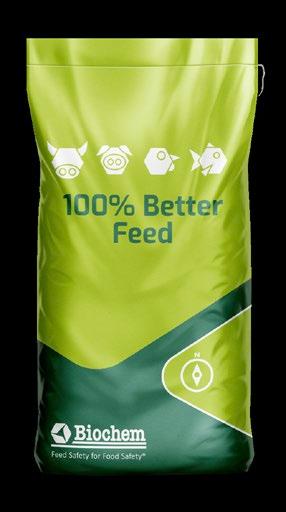

Biochem‘s global feeding team can help you improve the health and performance of your animals. We offer solutions for every animal species, every production segment, and every climate zone.
Toxin Management Gut Health Immune Stimulation Young Animal Nutrition � Antibiotic Reduction � Feed Efficiency
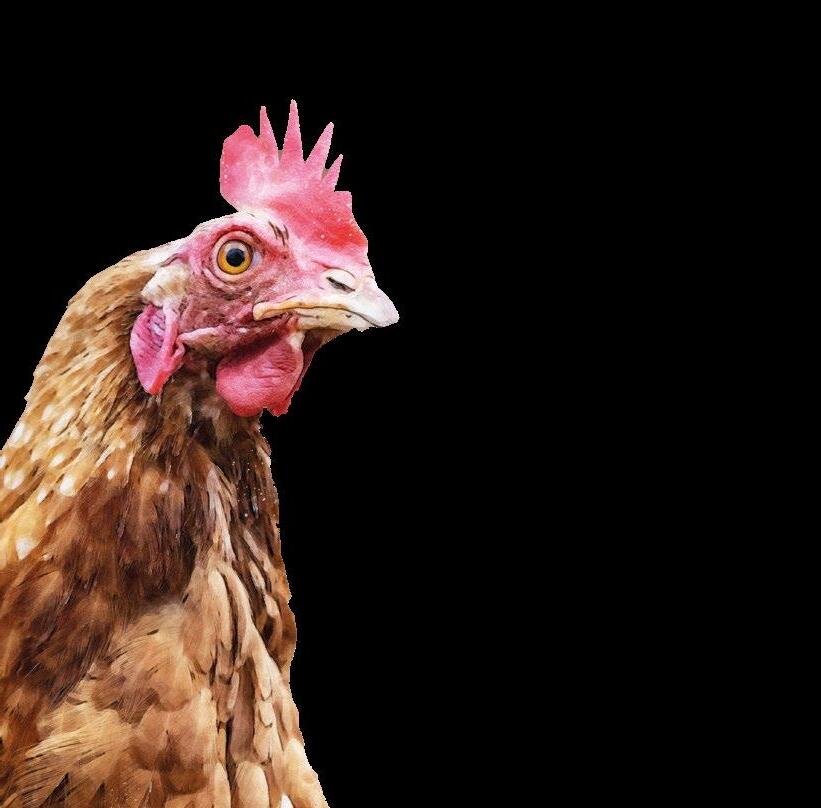
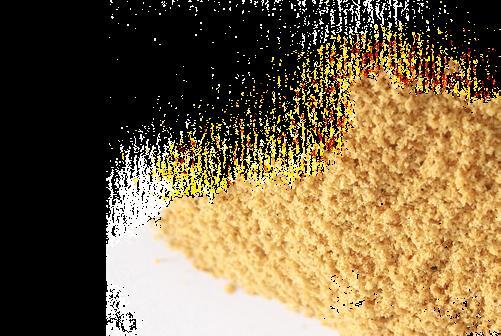

1 PhD student in Animal Science - Federal University of Paraná

² PhD student in Veterinary Sciences - Federal University of Paraná
³ Associate Professor, Department of Animal Science - Federal University of Paraná
4 Adjunct Professor, Department of Animal Science - Federal University of Paraná
Possessing adequate knowledge about the nutritional value of ingredients is a key point when it comes to the formulation of monogastric animal diets. Soybean meal is the main protein source with the highest intake levels within this type of diets. In this regard, Rostagno et al. (2017) recommend an inclusion level of up to 35% broiler formulations. Therefore, quality control of this raw material is essential for ensuring good animal performance levels in the field.
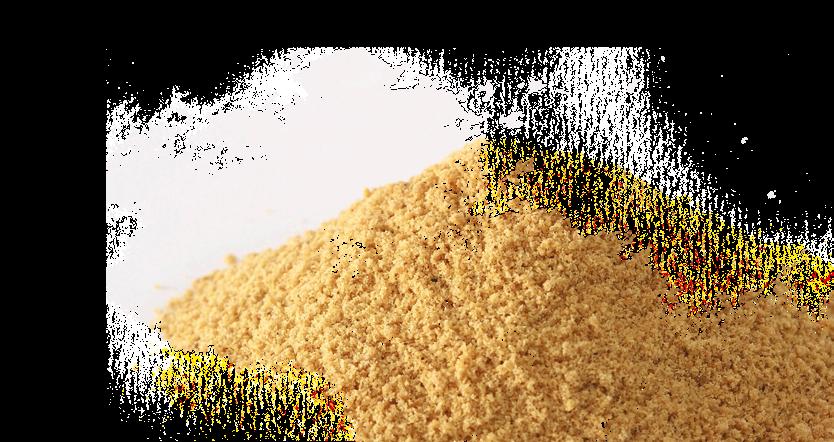
Raw soybeans contain several antinutritional factors, such as protease inhibitors and lectins, as well as allergenic factors such as glycinin and beta conglycinin. These are inactivated through heat treatment during processing. On the other hand, there are other heat-resistant compounds such as: oligosaccharides, non-starch polysaccharides and phytate. (Medic et al., 2014).

Protease inhibitoris and Lectins, Glycinin and Beta conglycinin

HEAT RESISTANT Oligosaccharides, Non-starch Oligosaccharides and Phytate
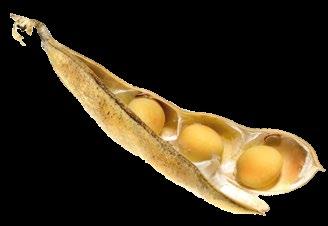

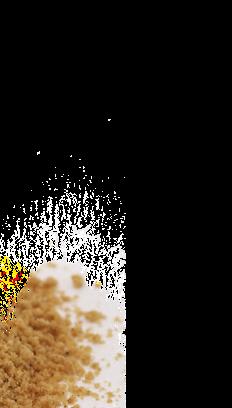
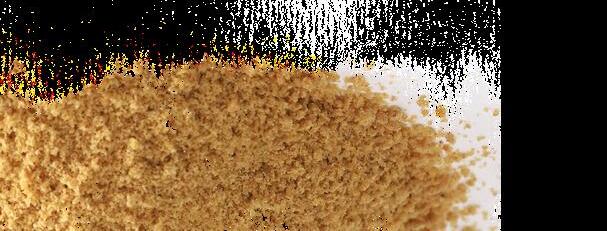
Currently the industry employs two techniques to assess if the grain’s thermal processing has been adequate. These two techniques have become widely adopted as they are easy to execute and hold low laboratory costs. These two tests are known as: solubility in KOH 0.02% and the urease activity test.

Solubility in KOH evaluates the quality of processing and inactivation of antinutritional factors. Values above 75% of protein solubility indicate a higher biological quality of protein and better amino acid utilization by the gastrointestinal tract.
When values are below the desirable levels, this indicates that there has been thermal super processing. Causing protein denaturation reactions, complexation of amino acids and a reduction of sugars (Maillard reaction). Consequently, the product loses nutritional quality due to a lower availability of amino acids (Heidenreich, 2000).

The urease activity test or index is an indirect measuring tool, that indicates if there has been thermal subprocessing through the determination of pH variations.

The higher the value recorded in the test, the greater the urease activity present in the sample.

Raw soybeans should present pH variations that range from 2.0 and 2.5 (Butolo, 2002). After thermal processing toasted soybean meal should have a pH variation within a 0.05 and 0.25 range, according to MAPA (1993).
The two compounds, Bowman-Birk factor (BBK) and Kunitz factor (KTI), are inhibitors of the activity of proteolytic enzymes formed by amino acids (Liu, 1997).
The BBK factor has a variable molecular weight between 6 and 10 KDa and has a structure formed by 71 amino acid residues (Figure 1). Meanwhile the KTI factor has a molecular weight of 20 KDa and is formed by 181 amino acid residues (Figure 2). Both of these are deactivated when soybean meal undergoes correct thermal processing.
Figure 1. Tridimensional structure of the Bowman-Birk factor found in soybeans. (Source: https://www.rcsb.org/structure/1BBI).
Figure 2. Tridimensional structure of the Kunitz factor found in soybeans. (Fonte: https://www.rcsb.org/structure/1AVU)
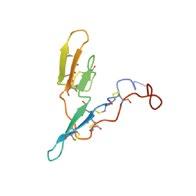
Approximately 6% of soybean protein is represented by protease inhibitors (Liu, 1997). When these anti-nutritional factors are present in soybean meal, they can negatively impact bird performance.
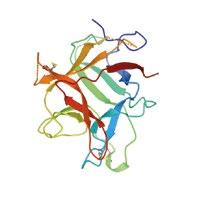











The main proteolytic enzymes which are produced in the pancreas are: trypsin and chymotrypsin. Both are endopeptidases that act by breaking nonterminal and specific connections. Trypsin acts on hydrolysis between lysine-arginine and chymotrypsin in hydrolysis among phenylalaninetyrosine (Rutz, 2002).
Due to the complexation which occurs between proteolytic enzymes and BBK & KTI factors, the pancreas is stimulated to increase its enzymatic secretion in order to compensate for the lack of active trypsin and chymotrypsin Leading to the presence of free ingested substrates that arrive at the duodenum to be metabolized.

As a consequence of this metabolic imbalance, the digestibility of nutrients contained within the diet is reduced. Triggering a physiological response with hyperplasia and pancreatic hypertrophy (Cabrera-Orozco et al., 2013).
Rocha et al. (2014) demonstrated an increase in the size and number of exocrine cells through the histological examination of pancreatic tissue in broilers fed raw soybean meal (Figura 3).
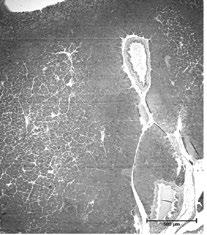

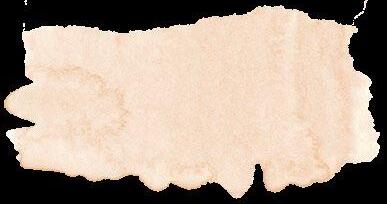

The inclusion of 12% raw soybean meal can lead to a significant increase of up to 62% in the weight of the pancreas (Rada et al., 2017).
De Coca-Sinova, et al. (2008) analyzed the apparent ileal digestibility of nutrients in broilers that received different soybean meals, and found that the digestibility of nitrogen, crude energy and amino acids was higher when soybean meal was offered with less anti-nutritional factors in its composition.
This demonstrates the importance of the quality of thermal processing for the deactivation of these factors that impair adequate nutrient use in animal diets.

Soy lectin can negatively affect the intestine and the mucosa’s immune system by:
Altering the structure of intestinal cells; Increasing intestinal permeability due to damage in junction proteins;

Decreasing the immune response and blocking IgA production;


Another heat-sensitive anti-nutritional factor is lectin, or soy hemagglutinin. Its main effects on broilers are: intestinal epithelium damage, decreased villi height, alterations in the activity of brush edge enzymes and hypersecretion of endogenous proteins inducing goblet cell hyperplasia. As a result of the latter, there is an increase in mucus production and a reduction in nutrient absorption from the diet (Grant, 1989; Liener, 1994).
Altering the composition of the intestinal microbiota (Pan et al., 2018; Zhao et al., 2011). These implications can significantly reduce the use of nutrients in the diet and cause deleterious effects on animal performance.
The main oligosaccharides found in soybean meal that interfere with broiler metabolism are: stachyose and raffinose. When consumed, these are not hydrolyzed and instead they become fermented within the gastrointestinal tract.
Conventional soybean meal contains approximately 4.61% of stachyose and 0.93% of raffinose in its composition. On the other hand, soybean meal derived from a modified cultivar presents 1.38% and 0.18% of stachyose and raffinose content, respectively (Baker et al., 2011).
In a study comparing soybean meal from modified and conventional cultivars, Parsons et al. (2000) found that there was a 7% increase in metabolizable energy values of the diet of birds that received conventional meal (2,739 Kcal/Kg dM) in relation to those that received a modified meal with low oligosaccharide content (2,931 Kcal/Kg dM).
In addition, the profile and concentration of essential amino acids (lysine, methionine and tryptophan) in soybean meal from modified cultivars with low oligosaccharide content was also altered (Baker et al., 2011). The same authors state that it is possible to reduce the amount of modified soybean meal (32.60%) in the diet compared to conventional meal (38.21%), due to the amino acid composition.
The nutritional value of soybean meal is directly related to the quality of the processing to which the grain is subjected to. When the processing is performed properly, the grain presents high crude protein content (46% to 50%), a good amino acid composition and anti-nutritional factors are correctly deactivated (Swick, 2009).
The ideal soybean meal should present high protein solubility (above 80%) and low urease activity (below 0.15). As these are indicative of adequate thermal processing and of a product with good nutritional quality.
Quality control of raw materials that reach feed plants is an important step that will directly impact the productivity of monogastric animals. Therefore, adequate knowledge regarding laboratory methodology as well as a proper understanding of the negative impacts caused by the presence of antinutritional factors in dietary ingredients, is key .
Importance of thermal processing of soybean meal for poultry nutrition



Going one step beyond in animal nutrition means ceaseless research and development. Going one step beyond means anticipating developments in the livestock industry and offering the highest quality products and services. Going one step beyond means total commitment to overcoming all our customers’ challenges.



1Polytechnic University of Madrid
2Cobb Spain, Madrid
Using whole wheat as a supplement to commercial feed is not a new concept. It has been a common practice in Northern Europe for more than 30 years (Forbes and Covasa, 1995; Engberg et al., 2004). Compound unpigmented feeds for broilers contain approximately 50-60% wheat.
G. Talegón1, L. Aguirre1, H. Kadardar1, M. Frikha2, J.C. Abad2 y G.G. Mateos1Grinding and granulation, together with transport, represent a high energy cost to manufacture a ton of feed.
Hence, the high use of whole wheat in countries like Denmark, where farmers plant the grain and raise chickens simultaneously.
In recent years, as a result of the ban on the use of antibiotics as preventives in the EU, the use of whole wheat has been extended to reduce the problem of wet litter and its impact on carcass quality.

In Spain, the main reason for including whole wheat in the feed was to control the problem of wet litter due to its effects on intestinal health and the functioning of the gastrointestinal tract (GIT) (Ravindran et al., 2006; Husveth et al., 2015).
The inclusion of whole wheat improves the functioning of the gizzard and reduces the incidence of proventriculitis, so, despite the high cost, its practical use increases.
Recent data on the benefit of whole wheat on economic performance is conflicting.

To ensure success, feeding based on the inclusion of whole wheat should be started no earlier than 7 days of age with levels below 5-8%.
In the finishing phase, levels of around 4-5%, are recommended, taking into account possible problems in the slaughterhouse (contamination of the carcass and hours of fasting).

In this particular, it has been shown that coarse grindings facilitate the functioning of the digestive system, improving the health status of the GIT of birds (Jiménez-Moreno et al., 2019).
To understand that whole wheat, at a physiological level, corresponds to the use of very coarse grindings; therefore, the physiological mechanisms that explain its activity are similar.

The beneficial effects of the coarse grinding of the ingredients (and therefore of the whole wheat) are related to the improvements in the functioning of the GIT and, in particular of the gizzard, where it improves the functioning with an increase in size and a reduction in pH which benefits the activity of pepsin and enzymes.
A functional gizzard increases the intensity of antiperistaltic movements, improving the motility of the walls and the integrity of the digestive mucosa (Svihus et al., 2004, 2010; Mateos et al., 2012; Jiménez Moreno et al., 2019).
Therefore, the positive effect of whole wheat will be more significant when there are digestive problems.
Recent research shows that the inclusion of whole wheat influences the control and prevention of specific processes and pathogenic microorganisms such as Salmonella, Clostridium, and coccidiosis. For example, Engberg et al. 2 (2004) found that whole wheat reduced the number of Enterobacteriaceae and Clostridium perfringens in broilers.
There are several criteria for using whole wheat in food:
AIn the most daring criterion, whole wheat is included at moderate to high levels (between 10 to 20% in the withdrawal feed) in substitution for commercial feed.
The great advantage of this strategy is the reduction in the cost per ton of feed and the increase in the factory’s production capacity.
The most significant drawback is that dilution (top dressing) modifies the nutritional profile of feeds, which can be a problem when high levels of whole wheat are used in commercial feeds with low safety margins.

In addition, with a high level of whole wheat for long periods of the bird’s life, we run the risk of a higher incidence of subclinical coccidiosis as a consequence of reducing the doses of coccidiostat below what is recommended.

BA second criterion for use, probably the most widely used in practice, consists of substituting a percentage of the wheat in the conventional diet (incorporated into the pellet or in the mash, where appropriate) for whole wheat.
In this case, the nutritional value of the feed is not diluted, but the economic savings are limited to the lower energy costs in its manufacture (milling and granulation).

In both cases, when adding whole wheat separately from the feed, it should be considered that the whole wheat does not undergo any heating process and, therefore, there is a possibility of microbiological contamination.

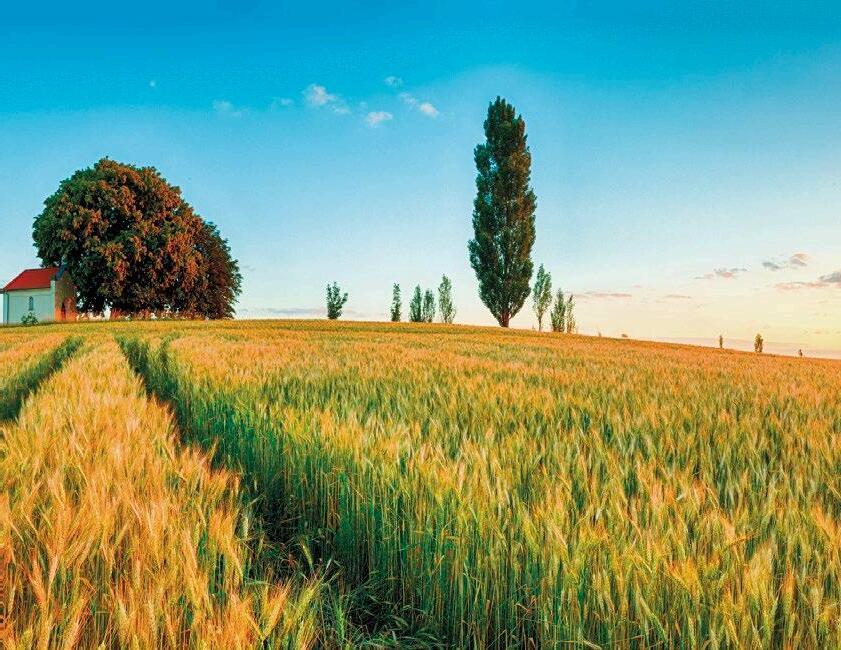
On the other hand, the inclusion of whole wheat modifies the texture and palatability of the feed, which can lead to preferences for the compound feed or the whole grain by the bird.
This preference can vary from farm to farm with 2 key factors to consider: chicken age and presentation (mash vs. crumble) and particle size (fine vs. coarse).

In this particular, take into account that the young chick (6 to 8 days of life):
Tends to reject eating whole wheat as grain size does not match beak size.
The wheat remains longer in the gizzard than the mash. Therefore, it tends to accumulate in this organ, and the birds tend to reduce their consumption since their appetite is reduced due to “feeling full.”
Also, excess wheat in the gizzard slows down the speed of transit of whole wheat.
To avoid problems with full digestive systems and possible contamination in the processing plant due to the use of whole wheat, the withdrawal time of the poultry feed before transport must be considered.
A third system to include whole wheat in the feed consists of adding it in a mixer together with the rest of the ingredients already ground to make the compound feed.
Once mixed, it is passed through the granulator, obtaining a granule of medium quality (whole grain impairs the quality of the granule, but wheat “per se” tends to improve it).
The biggest drawback of this system is that the savings in the cost of manufacturing the feed are minimal, but on the contrary, the needs of the bird are better respected.
Therefore, including whole wheat in the chicken feeding program allows for many variations, depending on the farm type and management, which can lead to contradictory results.
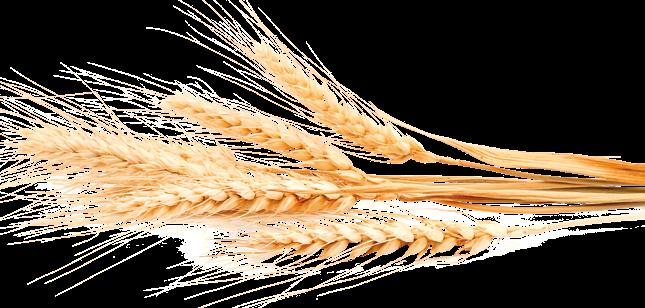
In this particular, the effects are usually less advantageous and even detrimental in relation to feeding consumption. When wheat is offered free choice, there is no sequential phase of learning before consumption with changes in the texture of the feed offered and in the palatability and lack of some nutrients in the case of adding wheat to larger ones.

In a recent study carried out by our group at the Polytechnic University of Madrid, we studied the effect of the inclusion of whole wheat at 3 levels (control without added wheat and experimental with 3% wheat from 0 to 14 days and then 7.5 o 15% from 14 to 40 d of age depending on treatment) in Cobb 500 chickens fed two nutrient levels (medium and high).
The average levels corresponded to typical feed used in Spain at that time (2,900 to 3,100 Kcal/kg and 1.22 to 0.97% dig. Lys, depending on age).
While high levels correspond to feed with 100 Kcal AMEn/kg and 5% extra digestible Lys in each of the 3 experimental phases (0 to 14 days, 15 to 29 days, and 30 days to slaughter at 40 days of age).
A total of 540 day-old chicks were used.
Each treatment was replicated 6 times, and the experimental unit was the pen with 15 chicks each.
The experiment was completely randomized with 5 treatments sorted in a factorial way with feed quality (high vs. medium nutrient density).
and the level of use of whole wheat in direct substitution of pelleted commercial feed (control, medium, and high) as main effects.
The productive data at each change of feed and data on the development of the proventriculus and the gizzard at slaughter were controlled.
The performance data from 0 to 40 days of age and the development of the gizzard at 40 days of age are detailed in Tables 1 and 2, respectively.
The first-and-only AO postbiotic developed specifically for layers, using patent pending technology.
Get more sellable eggs, egg mass and productive life span with AO-Biotics EQE. Built on BioZyme’s 70 years of Aspergillus oryzae (AO) fermentation expertise to offer products that enhance animal health, welfare and productivity.
We are AO experts. We are Anything but Ordinary.

a–c Means from the same column that do not share a common superscript differ (P < 0.05). 1 Initial live weight 46.7 ± 0.80 g. 2 n = 18 diet; n = 12 inclusion of wheat. 3 Interactions were not significant (P >0.05).

a-b Means from the same column that do not share a common superscript differ (P < 0.05). 1n = 18 diet; n = 12 inclusion of wheat 2 Interactions were not significant (P >0.05).
 Table 1. Influence of the type of diet and the use of whole wheat on the live performance in chickens from 0 to 40 days of age1
Table 1. Influence of the type of diet and the use of whole wheat on the live performance in chickens from 0 to 40 days of age1
From 0 to 40 d of age, the quality of the experimental feed did not affect the birds’ average daily feed intake (ADFI) (124 vs. 127 g/d). Still, the chickens that consumed the high nutrient density feeds grew more (82.7 vs. 80,6 g/d) and had a better FCR (1.503 vs. 1.573) than control chickens.
However, the energy FCR (Kcal AMEn/kg) was similar for both groups (4.73 vs. 4.71).

The inclusion of whole wheat in the feeding program did not significantly affect feed intake (124, 125, and 128 g/d for control, medium, and high percentage of whole wheat, respectively).
However, the ADG (83.6, 81.9, and 79.5 g/d) and FCR (1.486, 1.522, and 1.606) worsened with the use of wheat, specifically with the higher dose (15% vs. 7, 5% vs. 0%). Likewise, the energy FCR worsened with the use of whole wheat (4.55, 4.68, and 4.93).
Including whole wheat in feeding programs reduces costs and generally improves bird productivity. However, the use of whole wheat in broiler feeding programs should not be considered, in the case of Spain, as an economic strategy but rather to improve digestive physiology to enhance productivity and, therefore, carcass quality.

The use of whole wheat makes more sense in situations of high incidences of digestive problems, on chicken farmers who are also cereal producers, and when feeds with wide safety margins are used.

The use of whole wheat increased empty gizzard weight in absolute (37.1.40.7 and 40.8 g) and relative (1.04, 1.16, and 1.21%) terms, with significant effects (P < 0.05) were detected when comparing the control group vs. the mean of the 2 groups that included whole wheat (37.1 vs. 40.7 g and 1.04 vs. 1.19%, respectively).
Likewise, the pH of the gizzard was significantly reduced (3.09 vs. 2.55). The data shows that, under the indicated experimental conditions, with extraordinary growth of the chickens (3.35 kg in Cobb chickens fed with feeds of high nutritional density, without whole wheat), the use of whole wheat as a commercial feed diluent did not provide some productive benefit. Still, it improves the development of the gizzard and reduces its pH.
The main problem of the use of whole wheat is related to the reduction of consumption, more frequent in farms with healthy birds, high levels of wheat without prior learning by the chicken, and the use of wheat as a diluent, which affects the nutritional profile of the feed.
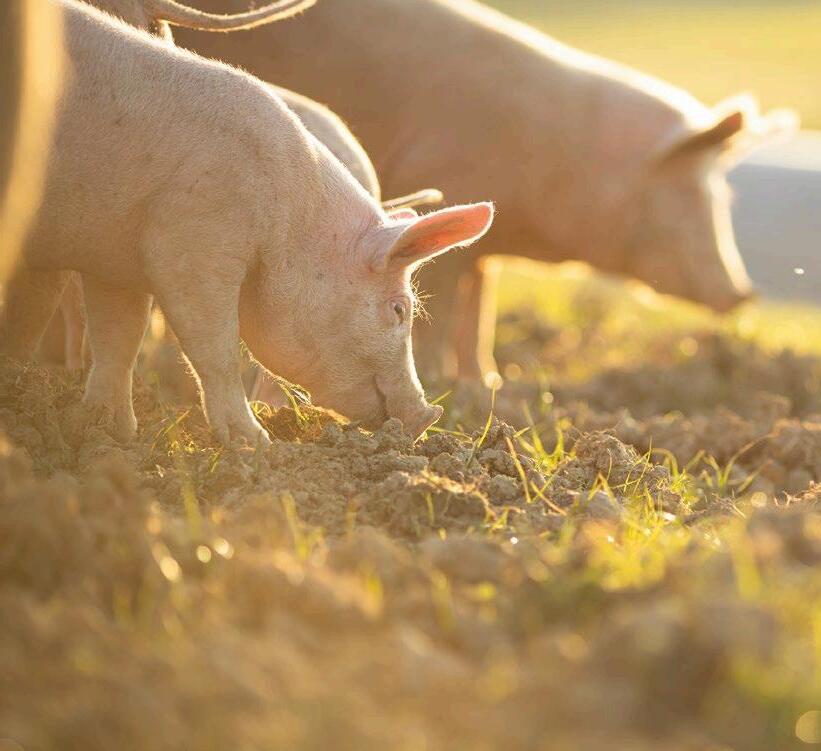 Giovanna Martelli Associate Professor of Animal Science Department of Veterinary Medicine. Alma Mater Studiorum University of Bologna (Italy)
Giovanna Martelli Associate Professor of Animal Science Department of Veterinary Medicine. Alma Mater Studiorum University of Bologna (Italy)
The term entomophagy derives from the Greek éntomon, ‘insect’, and phagein, ‘to eat’. It describes a type of feeding behavior in which insects are considered as food sources for human consumption or as animal feed.
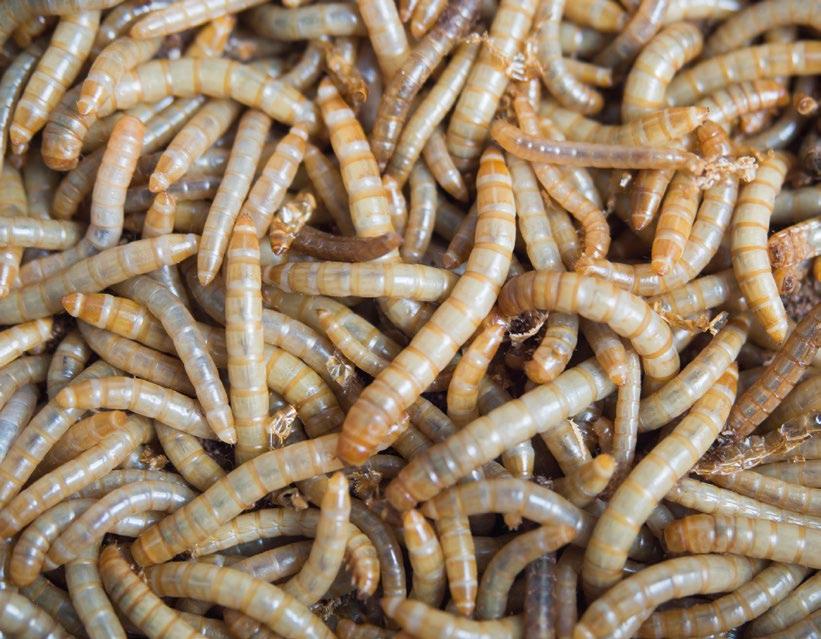
From an ecological standpoint , animal production represents a type of predatory relationship, where members of one species consume individuals from another species. From an anthropological point of view, it is a widespread practice amongst various populations and species within the planet aimed at satisfying nutritional needs.
The practice of eating insects is cited throughout religious literature Including Christian, Jewish, and Islamic confessions: “John was clothed in camel hair and with a belt of skins around his back, and ate locusts and wild honey (Mark I:6).”
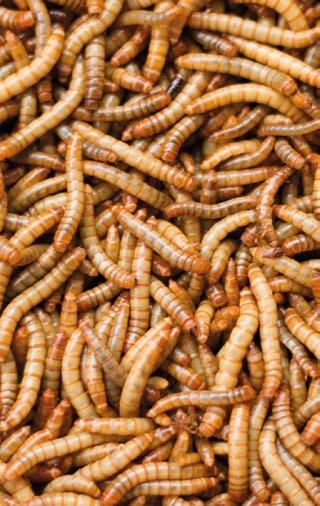

Global population growth and rising demands for animal derived foods are major drivers for finding alternative and sustainable feed sources. As these are necessary for maintaining livestock production to meet these growing demands.

In addition, the increased need for raw materials puts additional pressure on limited natural resources such as land, water and energy. This trend will require the adoption of specific policies to address sustainability issues.
Insects possess peculiar physiological characteristics that allow them to harness protein and energy from the diet more effectively than conventional livestock species.
Insects are poikilothermic animals (i.e. their body temperature varies considerably). Therefore, their metabolism does not require energy to maintain a constant internal temperature, unlike what happens with homeothermic animals (mammals and avian species). As a result, insects can convert nutrients from the diet into body proteins quite favorably.
Feed conversion rates (the amount of feed needed to produce a weight gain of 1 kg) vary greatly depending on the animal species as well as on production practices.
Typically, in U.S. production systems; 1 kg of live animal weight requires the following amount of feed: 2.5 kg for chicken, 5 kg for pork , and 10 kg for beef.
Insects require much less food. For example, the production of 1 kg of live weight for crickets, only requires 1.7 kg of feed. When these figures are adjusted to edible weight (normally the whole animal cannot be eaten), the advantages of insect consumption are even greater (Van Huis, 2013).

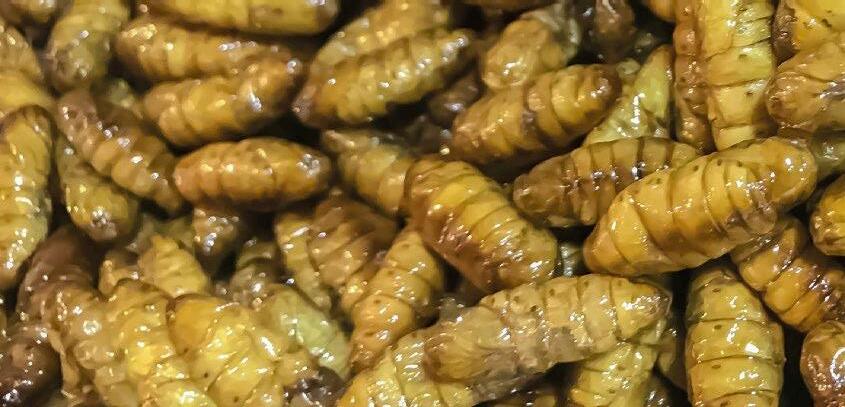
Insects have gained significant attention within a Circular Economy (CE) approach. The circular economy concept can be defined as:
A regenerative system that minimizes the entry of resources as well as reducing the generation of waste, emissions, and energy waste.
In practice, this means reducing waste to a minimum . Besides possessing a better ability to convert organic matter into protein compared with other species, insects require significantly less: rearing space, water, and often less energy than conventional livestock ( Figure 1, Dobermann et al., 2017).
Due to their nutrient profile, they can contribute to more balanced diets for humans and animals. Acting as substitutes for ecologically critical ingredients, such as:

Fishmeal
Soybeans
Insects are also capable of effectively converting organic, often unused and available waste into body mass (Derler et al., 2021).
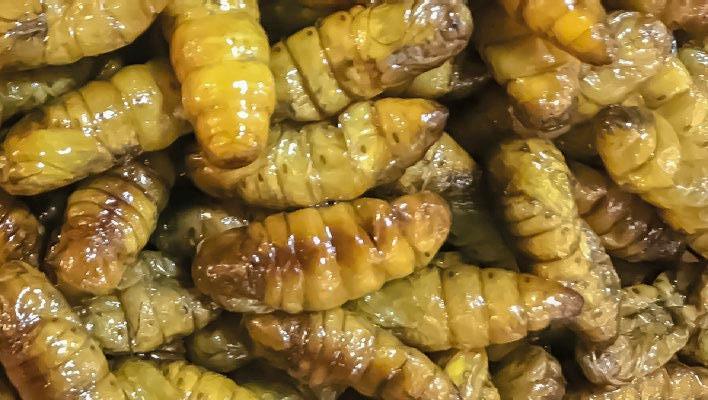
Insect producers are responsible for ensuring the safety of products placed on the market in accordance with the European “General Food Law” (EC Regulation 178/2002) and the “hygiene package” (e.g. EC Regulation 852/2004 and EC Regulation 183/2005).
Insects and their derived products, excluding live insects, intended for animal feed are considered animal by-products. This classification entails a series of obligations for producers which are defined in Regulation EC 1069/2009 and its EU Implementing Regulation 142/2011 .
Following the publication of EFSA’s 2015 opinion on the “Risk profile related to the production and consumption of insects as food and feed,” EU Regulation 2017/893 authorised processed animal proteins from farmed insects for aquaculture species for the first time. The authorized sources of insect protein were:
Black soldier fly (Hermetia illucens) and common housefly (Musca domestica);
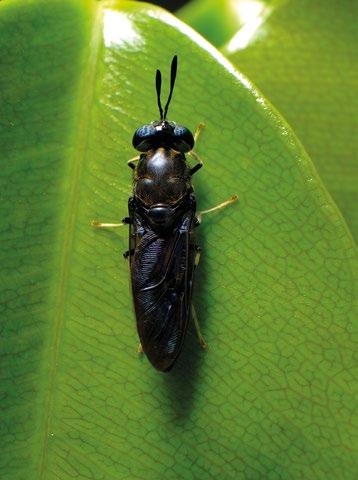
Yellow mealworm (Tenebrio molitor) and lesser mealworm (Alphitobius diaperinus);
House cricket (Acheta domesticus), ringed cricket (Gryllodes sigillatus) and field cricket
Following the changes introduced in EC Regulation 999/2001 by EU Regulation 2021/1372 , processed animal proteins derived from insects are now allowed for their use in pig or poultry feed, together with fur animals and pet feed. (Ipiff, 2021).



Most studies conducted on the digestibility of proteins and acids, as well as those carried out to evaluate the zootechnical performance of diets containing insects, have varying results. Depending on: insect species being evaluated, processing methods, dietary formulation and the experimental design used.
However, overall, the results available to date indicate that insect-based meals have good potential as protein sources for pig nutrition.
fishmeal.

The fat content of these Insect species is greater than that of soybean meal and fishmeal. Meanwhile, their amino acid profile is close to that of soybean meal and fishmeal (Table 1, Veldkamp and Vernooij 2021 ).
AA = amino acid; Ala = alanine; Arg = arginine; Asp = aspartate;
BSF = black soldier fly (Hermetia illucens); Ca = calcium; Cys = cysteine;
Glu = glutamate; Gly = glycine;
MD = housefly (Musca domestica);
His = histidine; Ile = isoleucine;
Leu = leucine; Lys = lysine;
Met = methionine; N = nitrogen;
P = phosphorus; Phe = phenylalanine;
Pro = proline; Ser = serine;
Thr = threonine; TM = Tenebrio molitor;
Trp = tryptophan; Tyr = tyrosine;
Val = valine
Tabla 1. Chemical composition of products from black soldier fly prepupae, housefly larvae meal, mealworm larvae, soybean meal and fishmeal (modified from Veldkamp and Vernooij, 2021).

The standardized ileal digestibility of crude protein and amino acids from whole BSF larval meal, partially defatted BSF larval meal, and MD larval meal in growing pigs is comparable to the digestibility of amino acids from soybean meal and fishmeal.
The amino acid digestibility of MD larval meal was higher to that of BSF larval meal.
Regarding growth parameters, the inclusion of 3.5% BSF larvae instead of fishmeal in piglet diets for creep feeding did not modify weight gain. As for weaned piglets, the use of air-dried TM larvae at 0, 1.5, 3.0, 4.5 and 6.0% at the expense of soybean meal and soybean oil resulted in a linear improvement in growth parameters for animals from 28 to 63 days of age.

Non-defatted BSF used at 0, 4 and 8% and defatted BSF used at 5.4% in substitution of roasted soybeans did not modify weaning growth parameters (21-36 day old piglets).
Partially defatted BSF, including 0, 5 and 10% replacing soybean meal, resulted in higher feed intake during the second phase of the experiment (piglets 21-61 days old).
In growing pigs weighing 11-29 kg, sun-dried MD larvae used at 0% and 10% to replace fishmeal resulted in higher ADG and improved FCR . BSF larval meal used at 0, 9, 12, 14.5 and 18.5% to replace fishmeal did not affect growth parameters in 18-53 kg pigs.
The inclusion of 5-10% TM in diets for weaned piglets aged 35 to 63 days as a substitute of soybean meal did not affect yield parameters. The ADG was only lower for pigs fed diets with 10% TM compared to those which were fed control diets with the addition of TM at an inclusion level of 5%.
Dried BSF powder larvae, used at 0, 4 and 8% to replace soybean meal, resulted in better performance when used at 4% in feeds for fattening pigs (76-115 kg live weight) compared to the inclusion of 0 and 8% ( Table 2 , Veldkamp and Vernooij, 2021).
Tabla 2. Growth of pigs fed insect-based products (taken from Veldkamp and Vernooij, 2021).
Air-dried & ground TM larvae
The final body weight with the inclusion of 1% was lower than that of the control diet. The CI at 1-2% inclusion was higher than in the control diet. Weight gain at 1% inclusion was lower than in the control diet at 29-42 and 21-56 days of age.
increasing
Body weight and weight gain increased linearly and CI decreased linearly with increasing inclusion
Feed intake, body weight, and weight gain increased linearly to increasing inclusion levels during phase I (28-42 days).
Weight gain at 10% inclusion waslower than at 0% and 5%.
et al. (2016)
Air-dried & ground MD larvae

Weight gain was greater and FCR was lower in pigs fed MD larvae compared to pigs fed fishmeal. Dankwa et al. (2000)
was not affected.
Body weight and weight gain at 4% inclusion was higher and FCR was less than 0% and 8% inclusion.
BSF=black soldier fly (Hermetia illucens); FCR = feed conversion rate; MD = housefly (Musca domestica);
PT = Ptecticus tenebrifer; TM = Tenebrio molitor
In regards to carcass and meat quality the few available and current studies which have been published, don’t seem to highlight any negative effect regarding insect inclusion in pig diets.
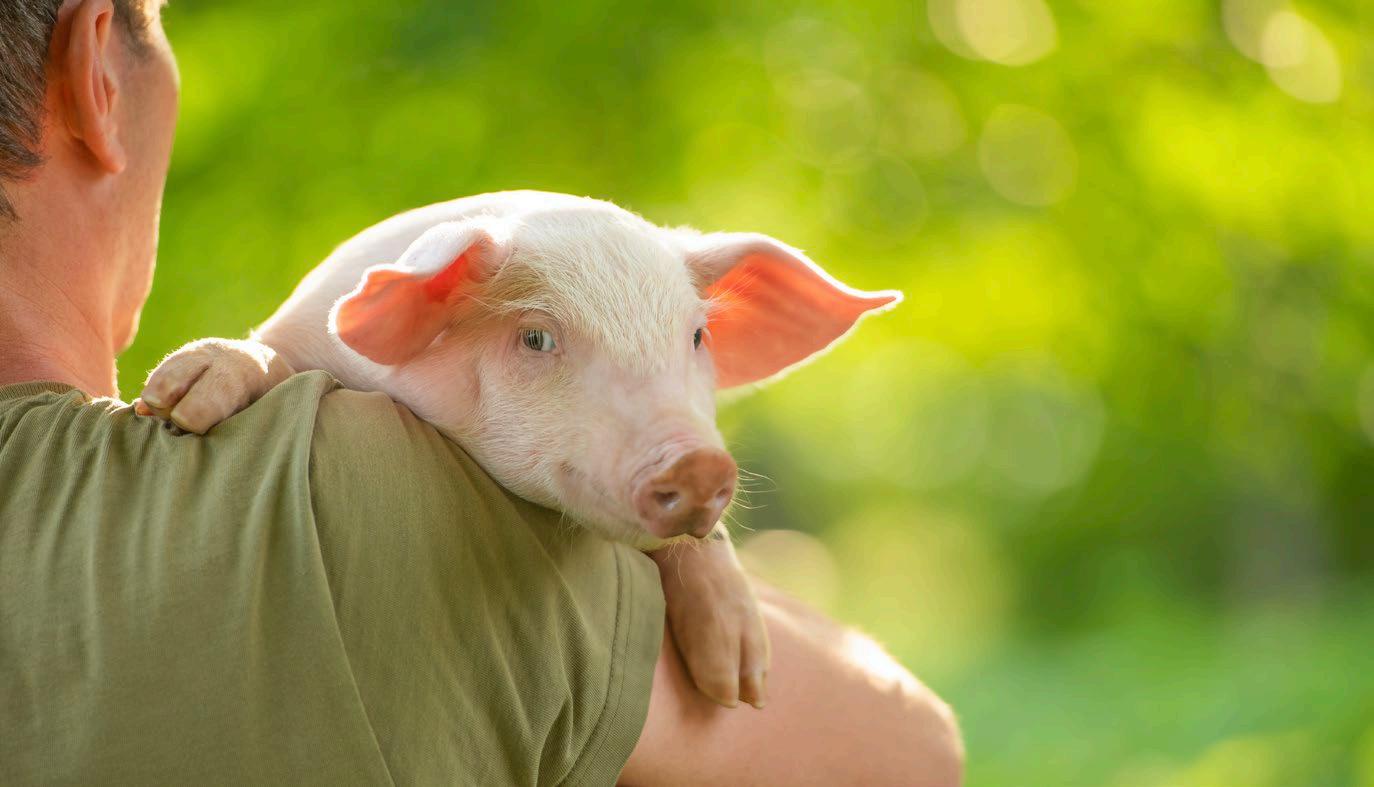
However, current available results, suggest that there could be a potential improvement of intestinal microbial populations, induced by bioactive substances (e.g. antimicrobial peptides, lauric acid) contained in insect bodies.
Similar to the aforementioned lack of information regarding carcass and meat quality; there are still very few studies assessing the
Another interesting aspect related to the use of insects, is their role as environmental enrichment elements. Recent research carried out at Wageningen University(Ipema et al., 2021) shows that live BSF larvae significantly attract weaned piglets. Exerting




The main challenge facing the insect protein industries is that of scalability. Considering the fact that the current marketing price of insect meal is still not very competitive.

Significantly high quality levels in these products must be maintained in order to meet market expectations, and become competitive.
More cost-benefit analyses are also needed in order to evaluate how these alternative ingredients effectively influence overall production costs.
Under such context, the functional value of insects in terms of improving pig health deserves special attention. As it could further increase the competitiveness and economic outlook of these protein sources compared to conventional ones.
Considering insects as a type of mini-livestock species, their welfare should be safeguarded during all stages of production and slaughter, just like any other species.
In regards to consumer acceptance, insect presence in different feedstuffs,does not seem to represent an obstacle. However, this may change according to individual characteristics and differences in specific food-producing animals.

Therefore, it is necessary to carry out studies to evaluate acceptance levels for high-quality products. Including meat products with protected designation of origin (PDO),obtained from animals that have been fed with non-conventional ingredients. This is especially true for hams (Spain, Italy and France are some of the major producers of these types of products.)
Finally, further studies should be conducted using the LCA (Life Cycle Assessment) method to further investigate the potential of using insects as an environmental friendly option.

The Department of Veterinary Medicine at the University of Bologna (Italy) in collaboration with an external company, is investigating the “welfare” of BSF larvae according to their breeding conditions. There is also a project which aims to investigate the effects on pig genotypes and establishing the most suitable age for PDO ham production with dietary BSF larvae inclusion.

Bibliographical references upon request
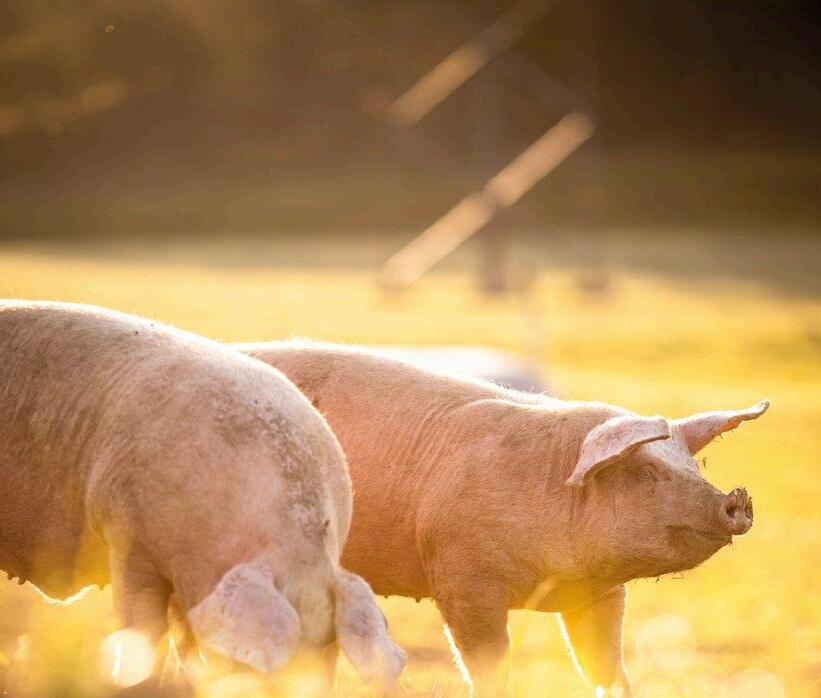
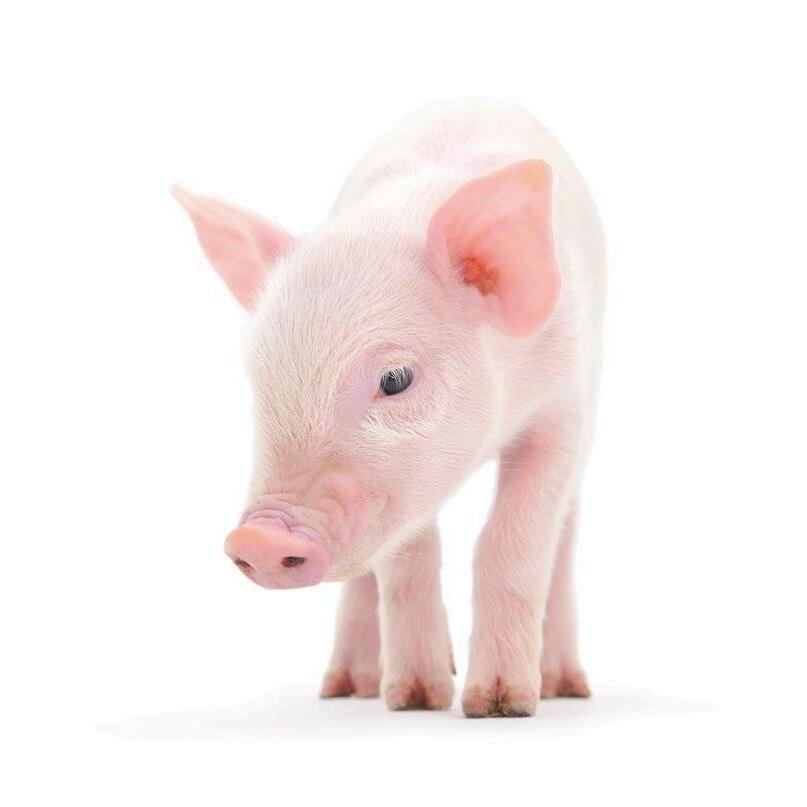


In this article we will talk about the metabolism of volatile fatty acids (VFA) or short-chain fatty acids (SCFA).
1 NACOOP, S.A. 2 Universitat Politècnica de ValènciaIn the ruminal environment or ecosystem, energy and protein are generated.
More than 60% of the energy that the animal uses for maintenance and production (growth, lactation, gestation, wool, etc.) comes from volatile fatty acids (VFA), and between 60 and 80% of the protein necessary for growth and production comes from the microbial population of the reticulum-rumen.

Therefore, the degradation and absorption of different feed components at the rumen level will determine future animal production (milk, meat, or wool).
Thus, the rumen represents a key segment of the digestive tract when it comes to ensuring optimal productive performance as well as to withstand extreme conditions.

Reticulum-rumen
Hence, if feed digestion within the rumen is enhanced, animal production will substantially improve and with it, the productivity of livestock systems as a whole.
All foods (fodder or concentrates) are made up of different fractions: carbohydrates, proteins, lipids, vitamins, minerals and water. From these different food fractions, carbohydrates represent the most important energy source and the main precursors for the fat and sugar (lactose) found in milk.
Rumen microorganisms enable the host to obtain energy from fibrous carbohydrates (cellulose and hemicellulose):
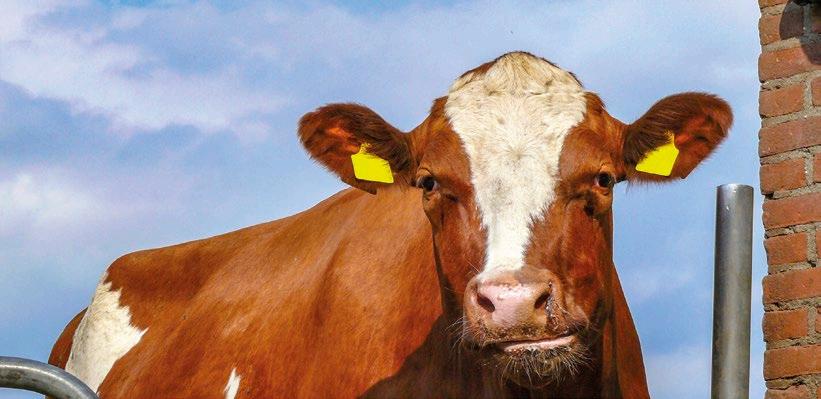
Fiber in general, tends to be bulky and is retained in the rumen where it ferments slowly. Serving as a support for rumen microorganisms (MOOs).
There are different fiber qualities depending on the type and place of growth of the plant as well as its age.
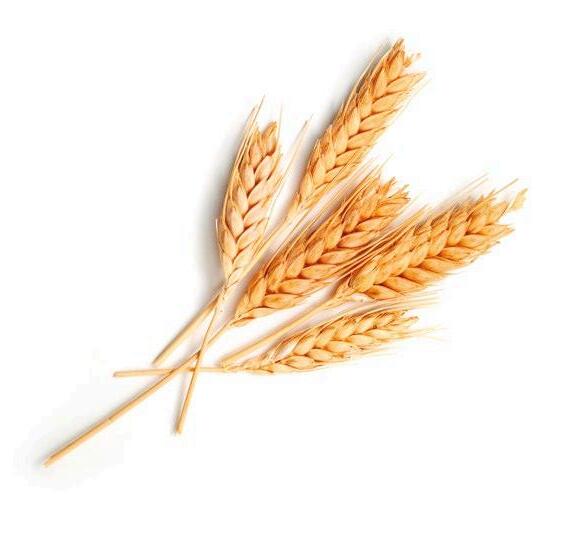
As the plant matures, lignin content in fiber increases while the degree of ruminal fermentation of both cellulose and hemicellulose is reduced.
Lignification in plants does not only occur due to aging as it also depends on climate. For example, under increased heat conditions lignification also increases. The presence of fiber in long particles is necessary to stimulate rumination.
Rumination increases fiber separation and fermentation, stimulates rumen contractions, and increases the flow of saliva into the rumen.
Saliva contains bicarbonate and phosphates which contribute to maintaining the acidity (pH) of rumen content and pH values close to neutrality.
Non-fibrous carbohydrates (starches and sugars) ferment rapidly and in a large percentage within the rumen.
The presence of non-fibrous carbohydrates increases dietary energy density, improves energy supply as well as determining the amount of bacterial protein which is produced in the rumen.
However, non-fibrous carbohydrates do not stimulate rumination nor saliva production and when found in excess they can inhibit fiber fermentation.
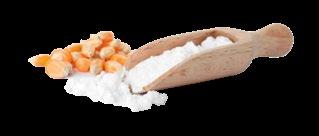
Thus, an adequate balance between fibrous and non-fibrous carbohydrates is very important in ruminant feeding in order to obtain profitable production levels.
The rumen digestion of starch generates a high production of VFA. Highlighting the production of propionate (C3) whose molar proportion increases in regards to the rumen fermentation of fibrous forage. Generating a higher molar proportion of acetate (C2).
Propionate found in the rumen is absorbed through the walls (more than 80%) reaching the liver. It is then transformed into glucose through the metabolic process known as gluconeogenesis.
Meanwhile, acetate and butyrate directly generate energy in the form of ATP in the rumen (Van Huotert, 1993).
In high-producing animals, the main organs involved in carbohydrate metabolism are: the rumen, liver, and mammary gland.
During rumen fermentation, microorganism populations, mainly bacteria, ferment carbohydrates to produce energy, gases (methane – CH₄ and carbon dioxide – CO₂), heat and organic acids.
The pathways involved in the formation of final fermentation products are very complex. Involving different reactions, that lead from pyruvate or phosphoenolpyruvate (glycolysis products), to CO₂, CH₄ and acetic, propionic, butyric and valeric acids (VFA).
PYRUVATE (C3)
Acetate and CO₂ are produced by numerous species of rumen microorganisms from carbohydrates, while other species produce them from propionic, butyric and valeric acids.
However, many of these individual species also have one or more end products such as succinate, lactate, formate, hydrogen, and ethanol, which are not final products of fermentation.
These compounds, except for ethanol, are subsequently metabolized by other species which produce the typical end products.
VFAs are end products of microbial fermentation which are absorbed through the keratinized epithelium of the rumen.
These acids are short chain carbon compounds, which are produced during the fermentative degradation of food and can be converted into glucose, amino acids or fatty acids by rumen bacteria or by the animal’s cells.

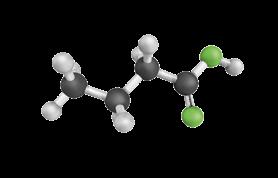
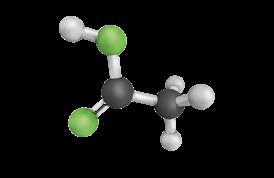
Formic, acetic, propionic, butyric, isobutyric, 2-methyl butyric, valeric, isovaleric, caproic and caprylic acids are considered VFAs.
Acetic, propionic and butyric acids are the ones produced in greater quantities. These are produced by intra- and extracellular enzymes of bacteria and protozoa.
Most of the acetate and all of the propionate are transported to the liver. On the other hand, most of the butyrate is converted to a ketone known as [beta]-hydroxybutyrate in the rumen wall. (Figure 1)
Acetic, propionic and butyric acids make up the majority (>95%) of the acids produced in the rumen.
The fermentation of amino acids in the rumen also produces acids, which are called iso-acids.
The energy and iso-acids which are produced during fermentation are used by bacteria to grow (i.e. mainly to synthesize protein).
Ethanol, succinate, and lactate are catabolized to final products: acetic, propionic and butyric by the different microorganism species (Santini, 1994).
Acetic acid is transported in the bloodstream from the rumen and incorporated directly into the cellular proto-plasma. It is then used for obtaining energy via the acetyl-CoA and Krebs cycle, or for fat synthesis (both fat tissue and milk fat).
O nutrients
CO₂ and CH₄ are belched, and the energy which is still present in CH₄ is lost.
The heat produced during fermentation is dissipated, if it is not necessary for maintaining body temperature.
The degradation and fermentation of polysaccharides (complex carbohydrates) in the rumen occurs essentially in three steps:
Attachment of microorganisms to forage particles, causing the dissociation of carbohydrates from the structure of the cell matrix.
Hydrolysis of released polysaccharides to monosaccharides.
Intracellular fermentation of monosaccharides, from which VFAs are obtained. Pyruvate and phosphoenolpyruvate are the main products obtained from intracellular fermentation of hexoses and pentoses. Microorganisms transform these into di erent end products of rumen fermentation through di erent metabolic pathways (Leng 1973).
Ketones are the main energy source for most body tissues.
Ketones are mainly derived from butyrate production in the rumen, but they can also come from the mobilization of adipose tissues during the initial stages of lactation
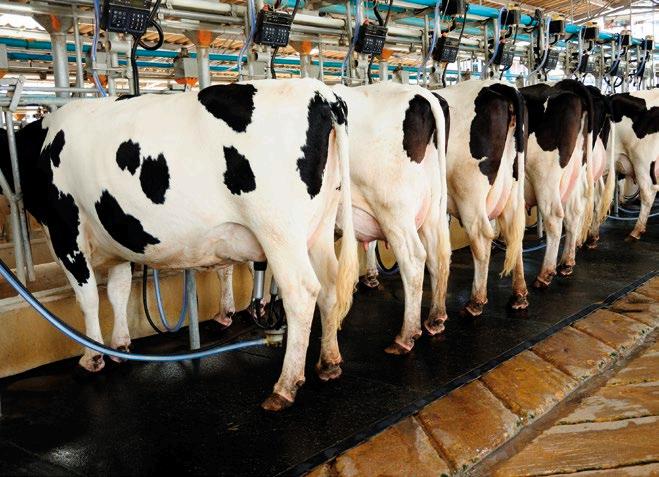
The liver is the main organ where the formation of ketone bodies occurs, while kidneys participate to a lesser extent
The process takes place in the mitochondrial matrix and occurs in different steps.
The rst reaction is the condensation of two acetyl-CoA molecules to form acetoacetyl-CoA. This ocurrs through the action of the enzyme β-ketothiolase. The acetoacetyl-CoA molecule is condensed with another acetyl-CoA molecule to form β-hydroxy-β-methylglutaryl-CoA (HMG-CoA), by the action of the enzyme HMG-CoA synthase. Finally, HMG-CoA lyase hydrolyzes HMG-CoA into an acetoacetate molecule and an acetyl-CoA molecule.
A part of the acetoacetate is reduced to β-hydroxybutyrate within the mitochondria, consuming an ATP equivalent (NADH molecule); This reaction is catalyzed by the β-hydroxybutyrate dehydrogenase which is is closely associated to the mitochondrial inner membrane.
Acetone is formed by a slow spontaneous, non-enzymatic decarboxylation of acetoacetic acid. Thus, acetone levels are much lower than those of the other two types of ketone bodies.
Since it cannot be transformed back into acetyl-CoA, it is excreted through urine or exhaled Acetone exhalation is responsible for the characteristic fruity smell in the breath of cattle(apple-like smell).
The nutrients absorbed in the rumen or small intestine, are mainly directed to the liver and other organs for catabolism or anabolism, as needed.

The metabolism of monosaccharides revolves around the supply and destination of hexose, this monomer being the main source of energy for cells, the catabolic pathway is glycolysis, carried out in the cell cytoplasm. This process consists of eight reactions:
Glucose enters the cytoplasm to be phosphorylated (addition of a phosphate group), from ATP. This reaction is catalyzed by hexokinase. The resulting glucose 6-phosphate (aldohexose) is abundant in all cells, since the vast majority that enters the cytoplasm ends up being phosphorylated, in order to prevent it from crossing back the cytoplasmic membrane and diffusing to the extracellular environment.
Aldohexose is isomerized and transformed into fructose 6-phosphate (ketohexose). Reaction catalyzed by glucose-6-phosphate isomerase.
3 4
Fructose-6-phosphate is phosphorylated from ATP at carbons 1 and 6 to give rise to fructose-1,6 bisphosphate. Phosphofructokinase-catalyzed reaction.
Fructose-1,6-bisphosphate is divided into glyceraldehyde-3-phosphate and dihydroxyacetone phosphate. -catalyzed reaction.
Triose phosphate isomerase catalyzes the conversion of dihydroxyacetone phosphate to obtain more glyceraldehyde-3-phosphate
Glyceraldehyde-3-phosphate is oxidized and phosphorylated, at carbons 1 and 6 forming 1,3-bisphosphoglycerate by glyceraldehydephosphate dehydrogenase, then transfers its phosphate group, to synthesize ATP and is transformed into 3-phosphoglycerate.
3-phosphoglycerate isomerizes C3 to C2 and is transformed into 2-phosphoglycerate by phosphoglycerate mutase. Subsequently, the enolase promotes the formation of a double bond, eliminating a molecule of H₂O and forming phosphoenolpyruvate.
Pyruvate enters the mitochondrial matrix, therefore, each hexose (glucose) generates:
7 8 Ribose 5-phosphate
Fructose 6-phosphate
Acetylphosphate
Acetate
Acetyl-CoA
Propionyl-CoA
Pyruvate CO2 Acetil-CoA Lactate Oxalacetate Succinate Hemicellulose CARBOHYDRATES Acetate Butyrate Propionate VFA Methanogenesis ANABOLISM
All propionate is converted to glucose in the liver. In addition, the liver uses amino acids for glucose synthesis. This process is known as gluconeogenesis.
It is very important, because in general there is not enough glucose absorbed in the digestive tract and all the sugars found in milk (lactose approximately 1575g in a cow that produces 35 kg of milk a day) must be produced by the liver in
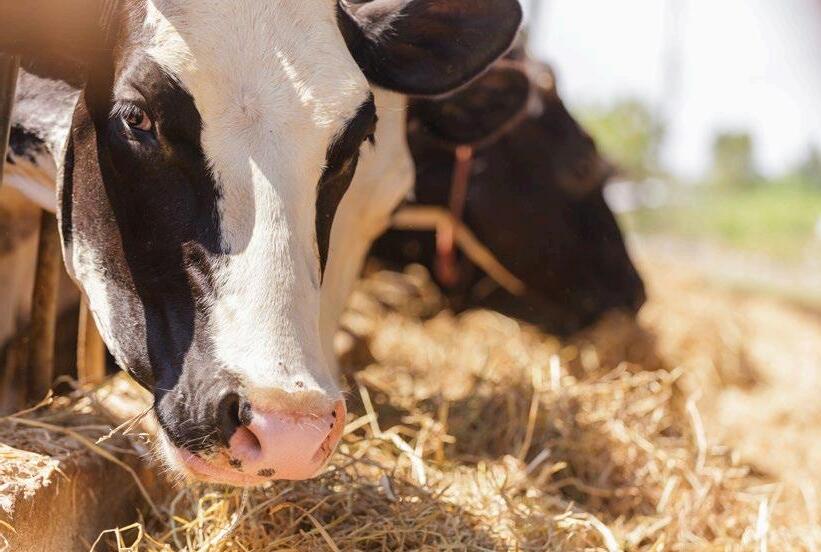
Gluconeogenesis also synthesizes GLUCOSE from lactate and glycerol, in the cell cytoplasm and mitochondria of hepatocytes.
In this metabolic pathway, six ATPs are consumed for each hexose produced and the CH3-CH2-COOH propionate is the only glucogenic VFA.
The importance of gluconeogenesis in ruminants is mainly due to the fact that their bodies absorb small amounts of glucose in the digestive tract and that their ability to store glycogen in the liver is more limited than that of monogastrics.
Ruminal metabolism of volatile fatty acids (Part 1)
DOWNLOAD ON PDF

